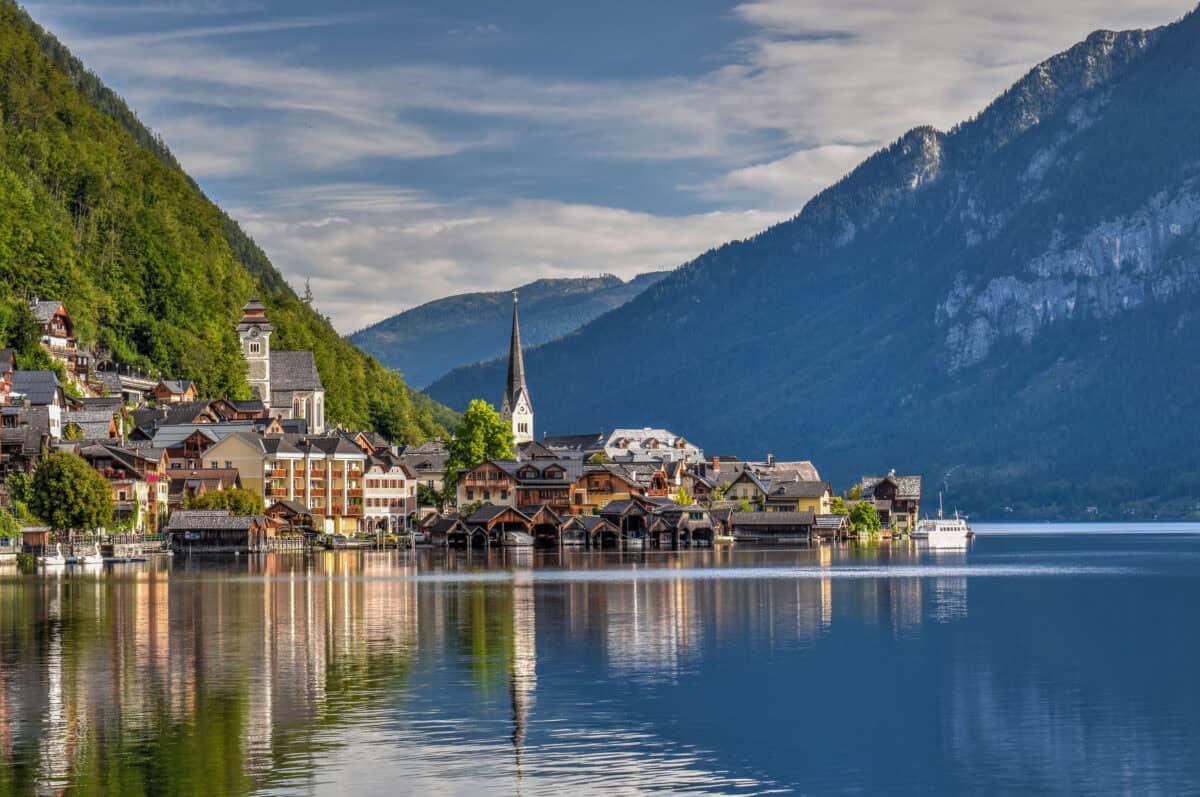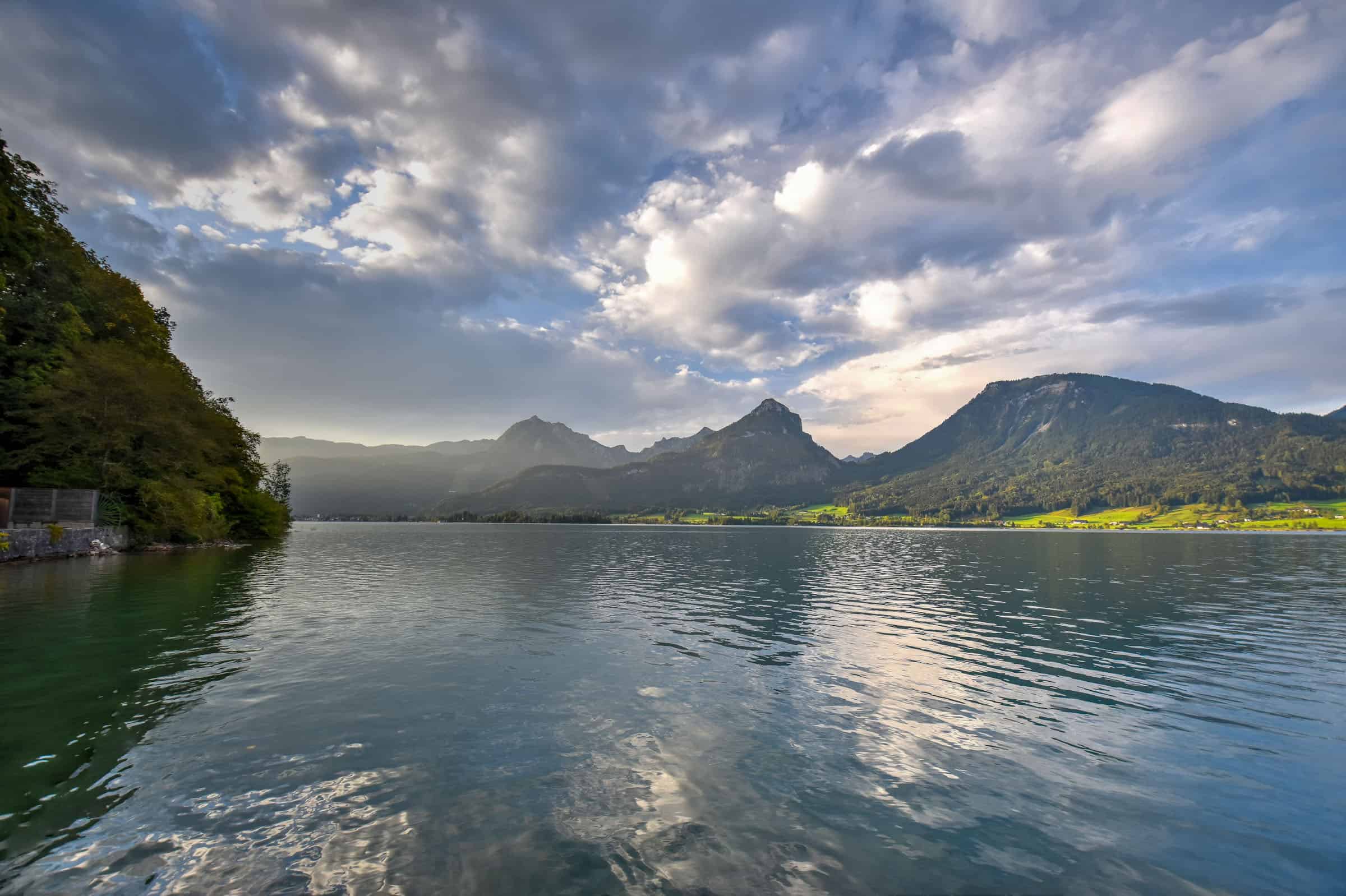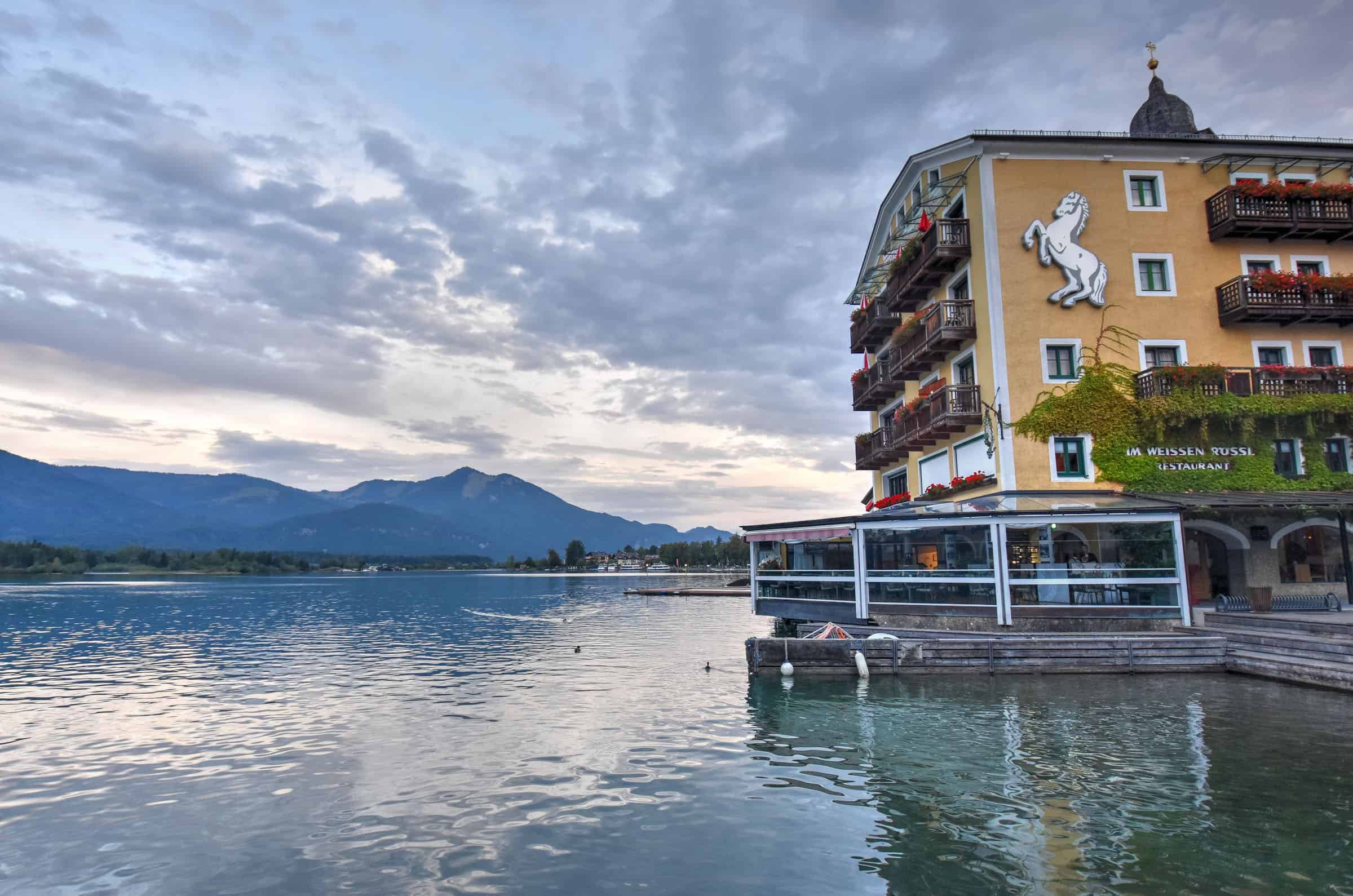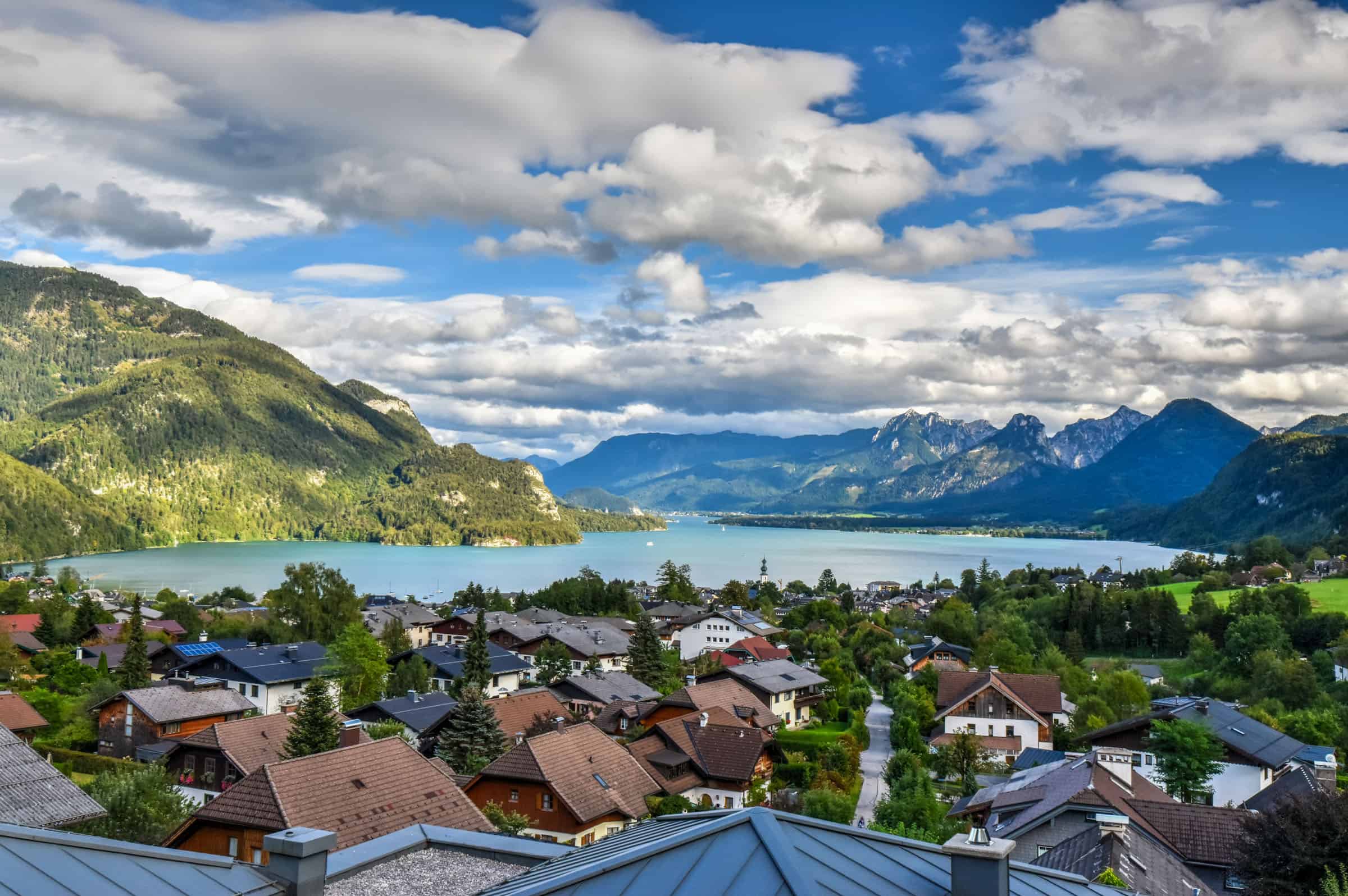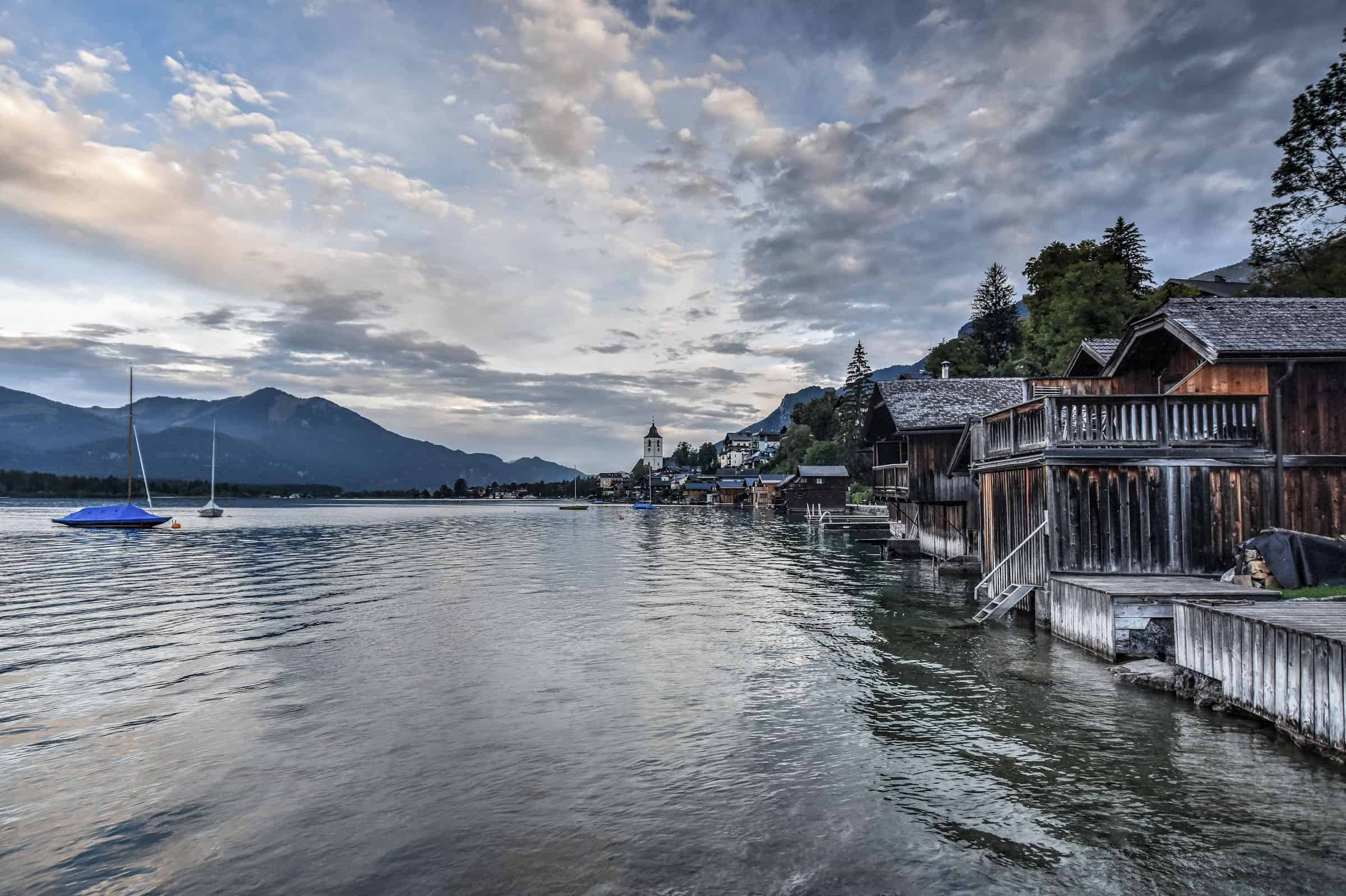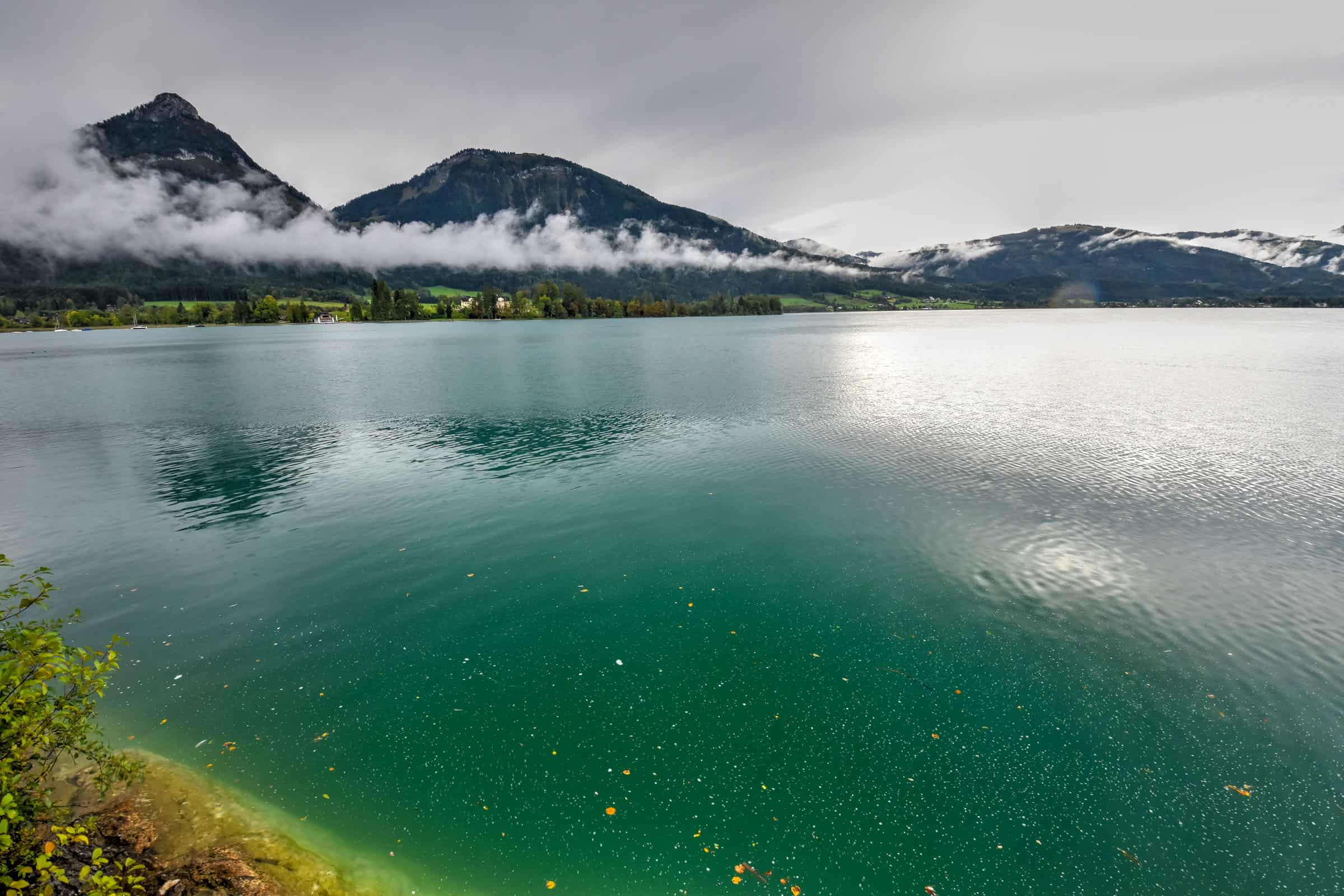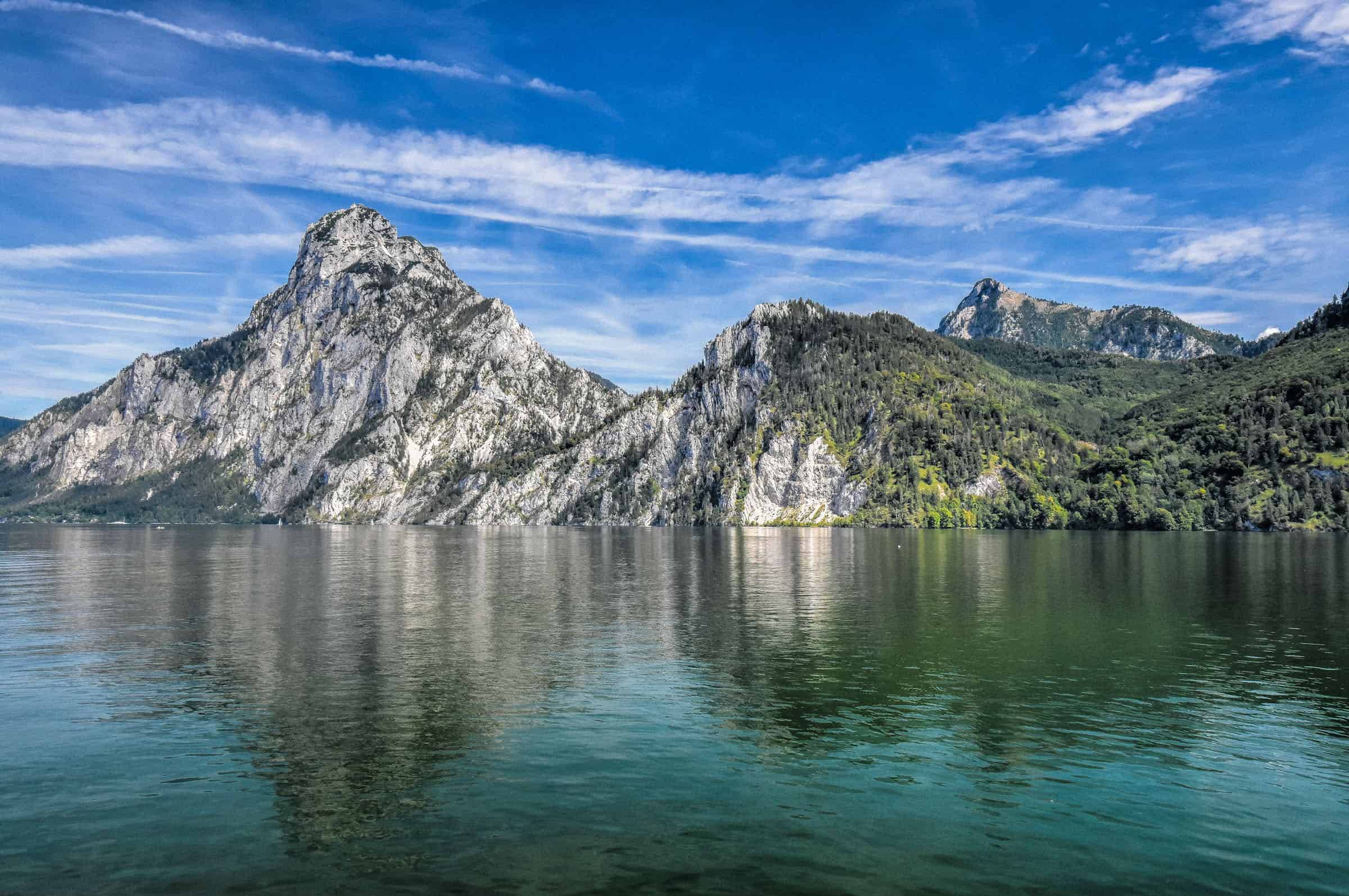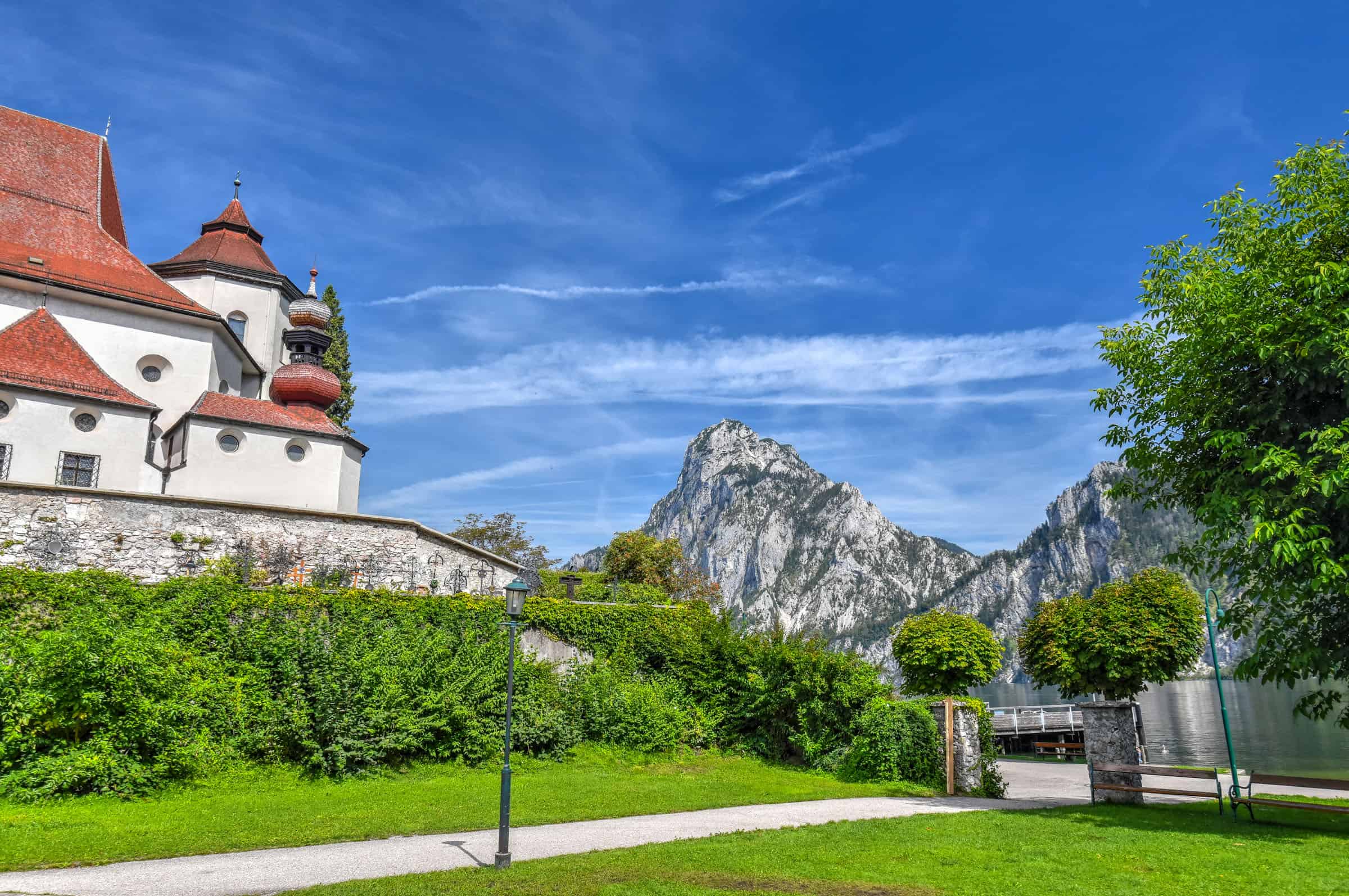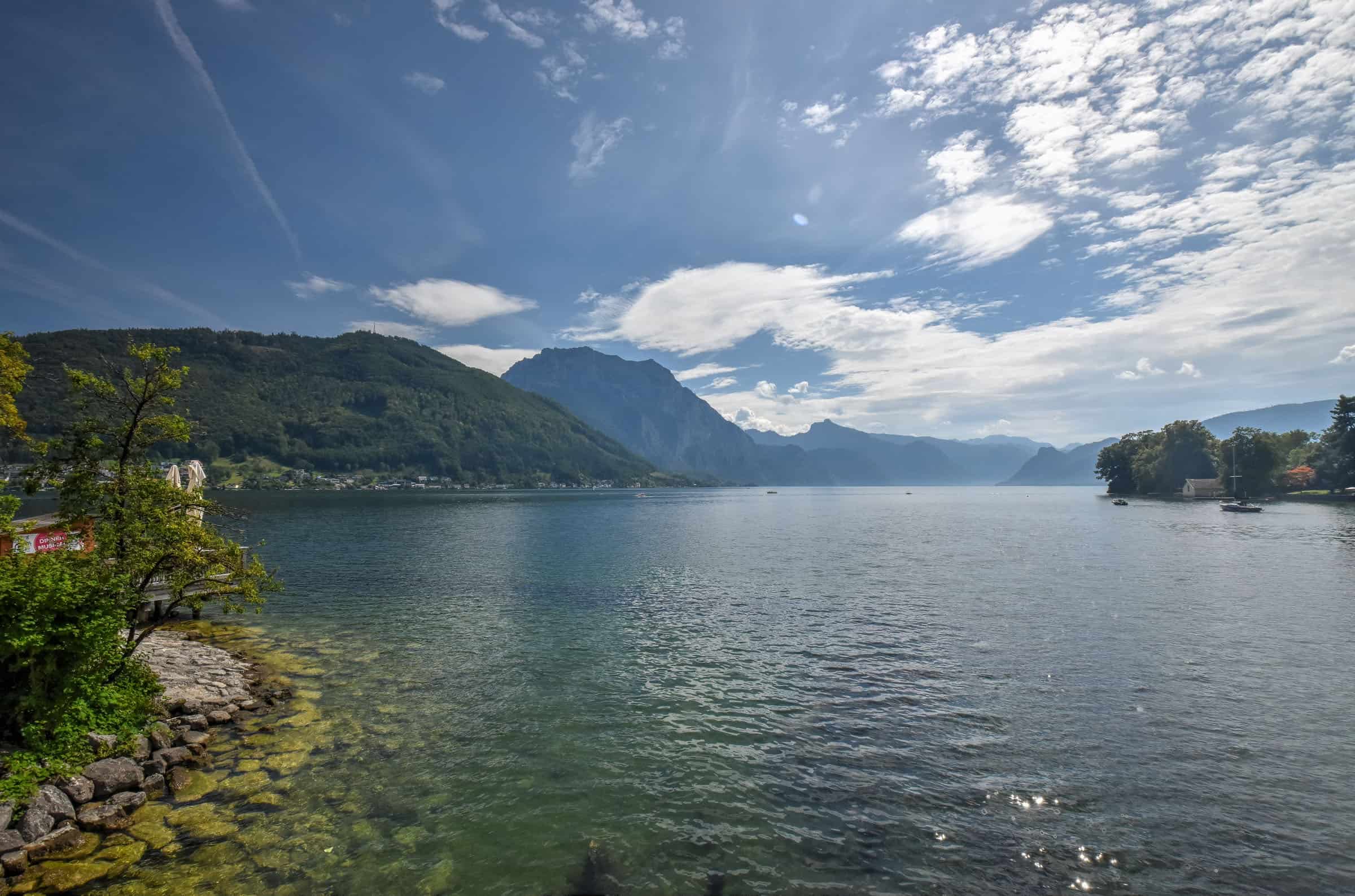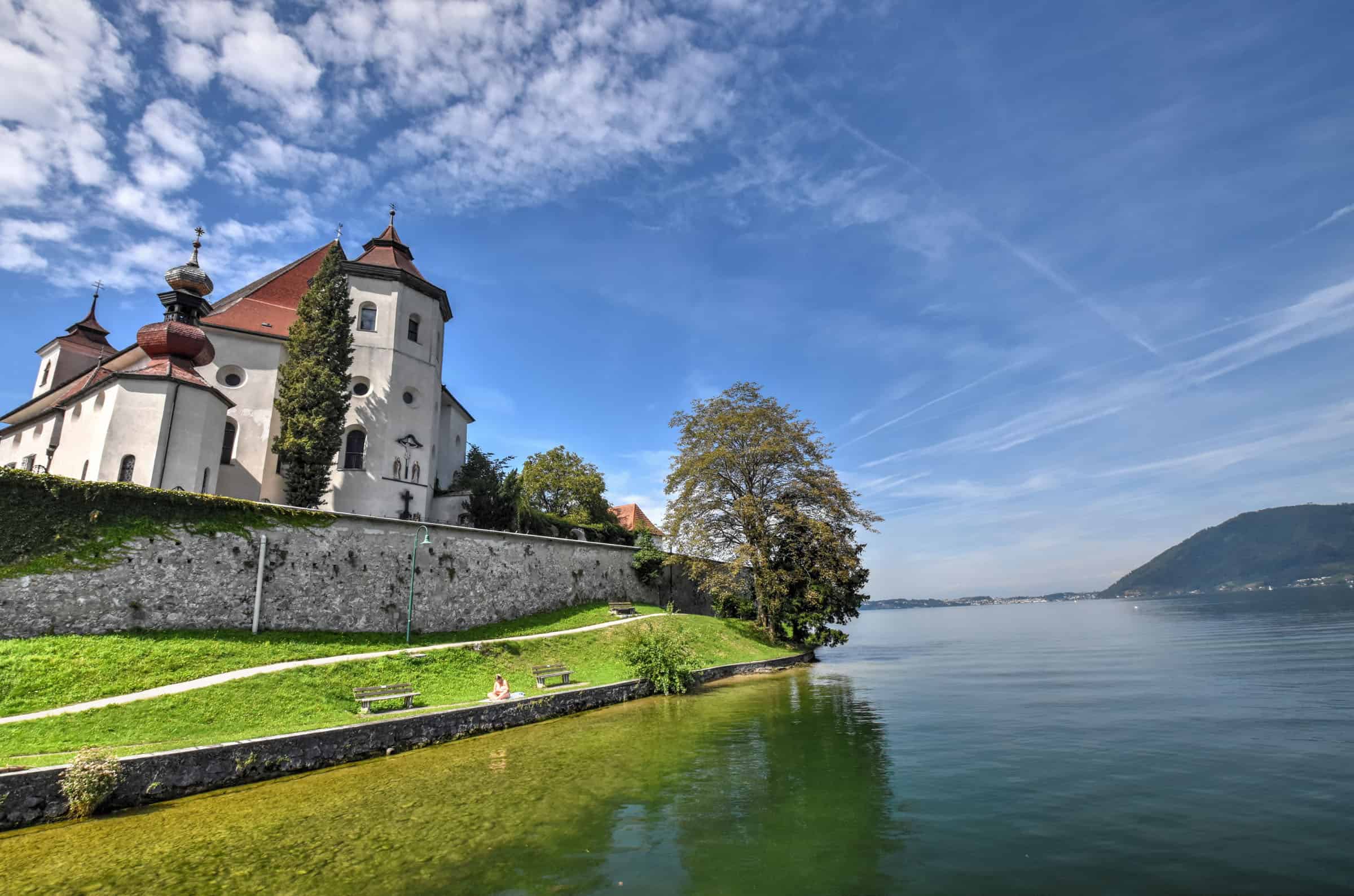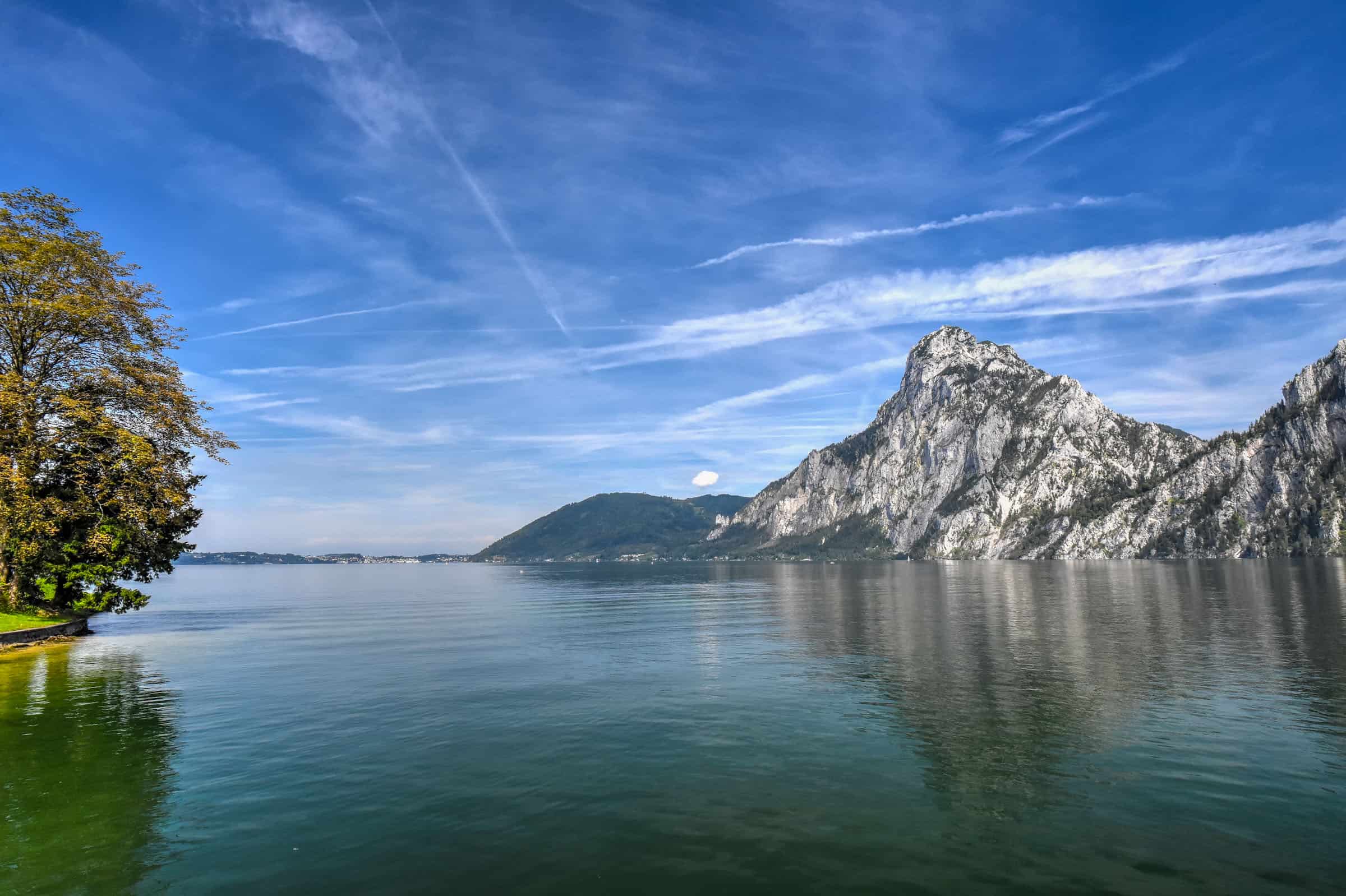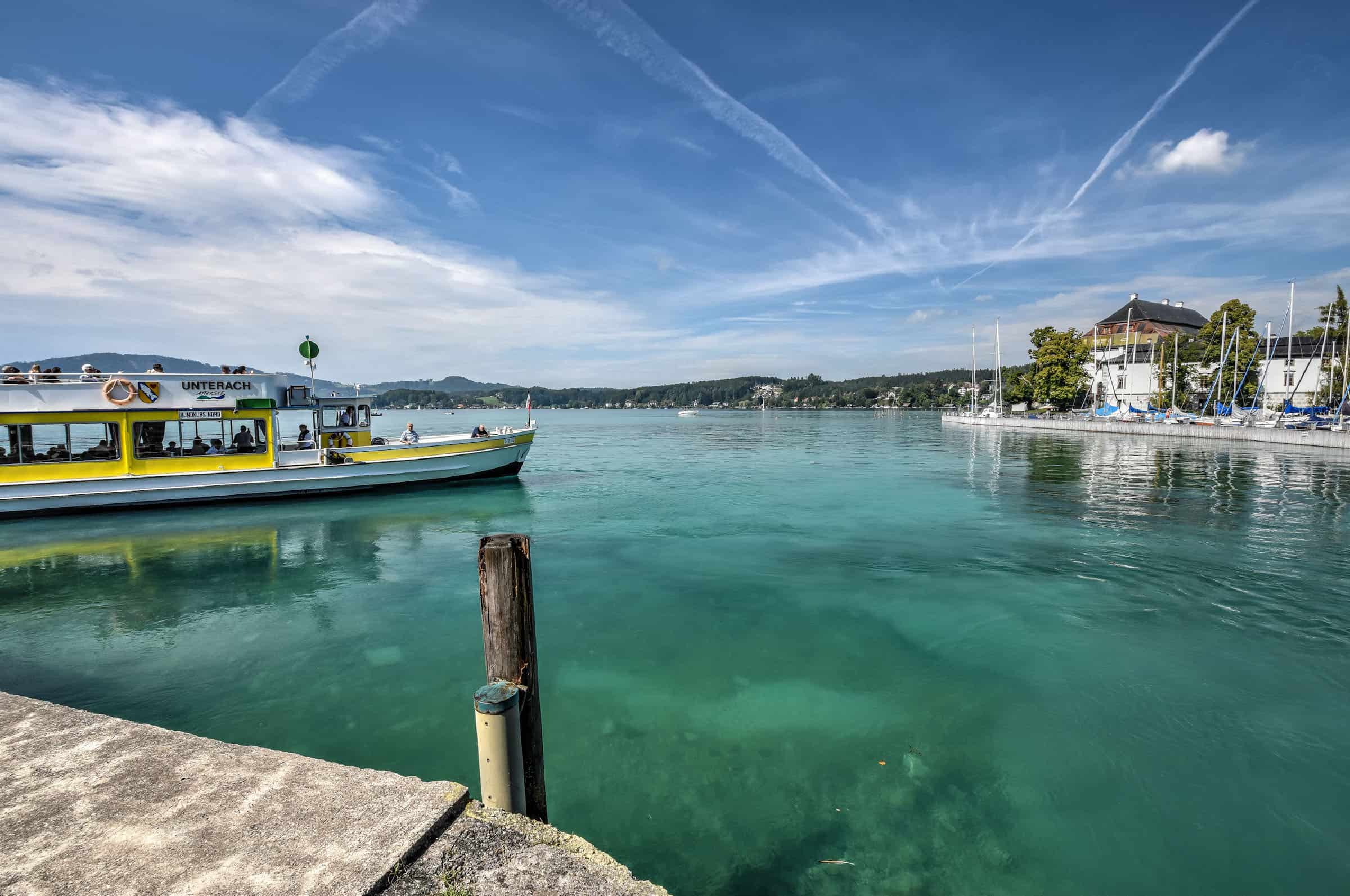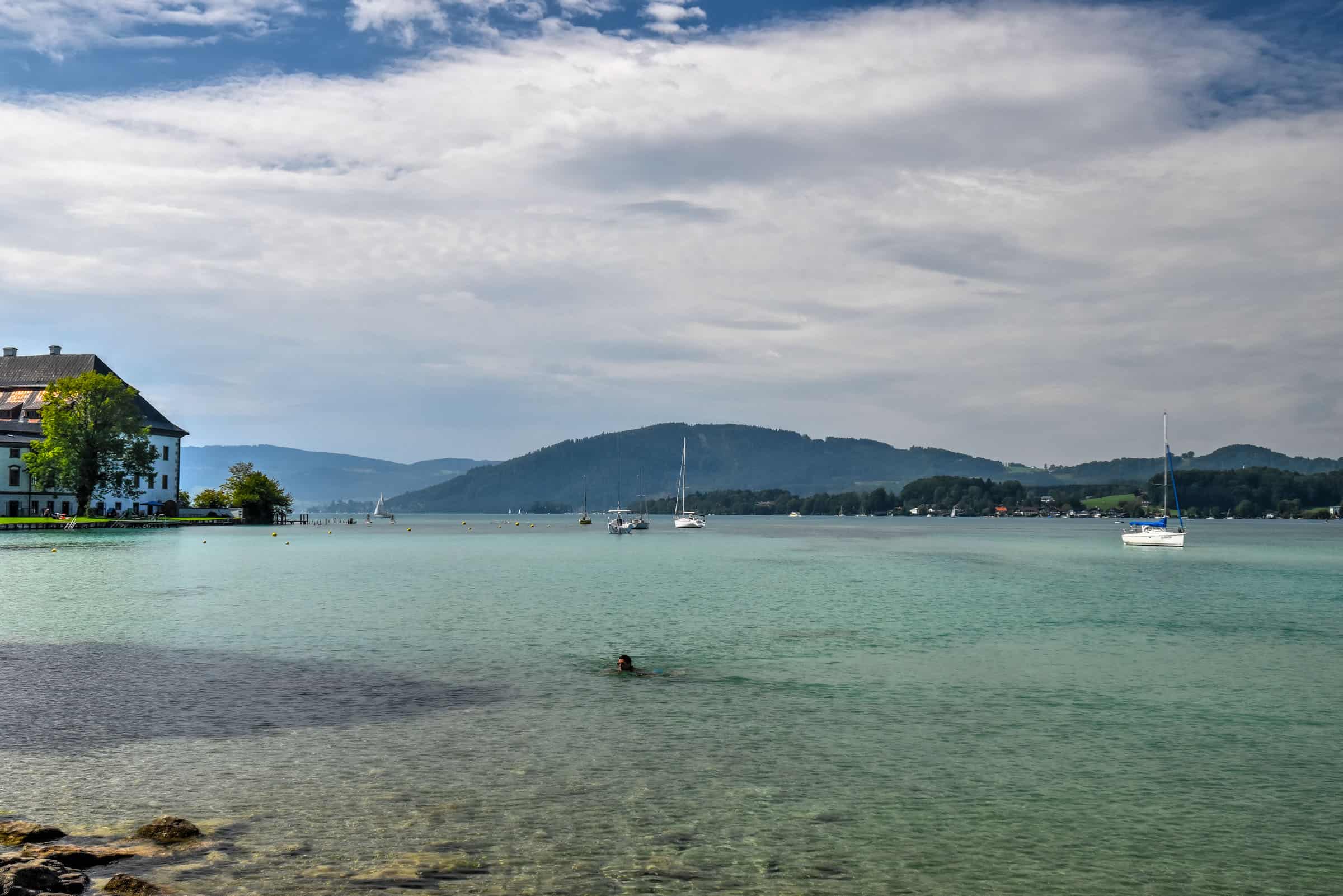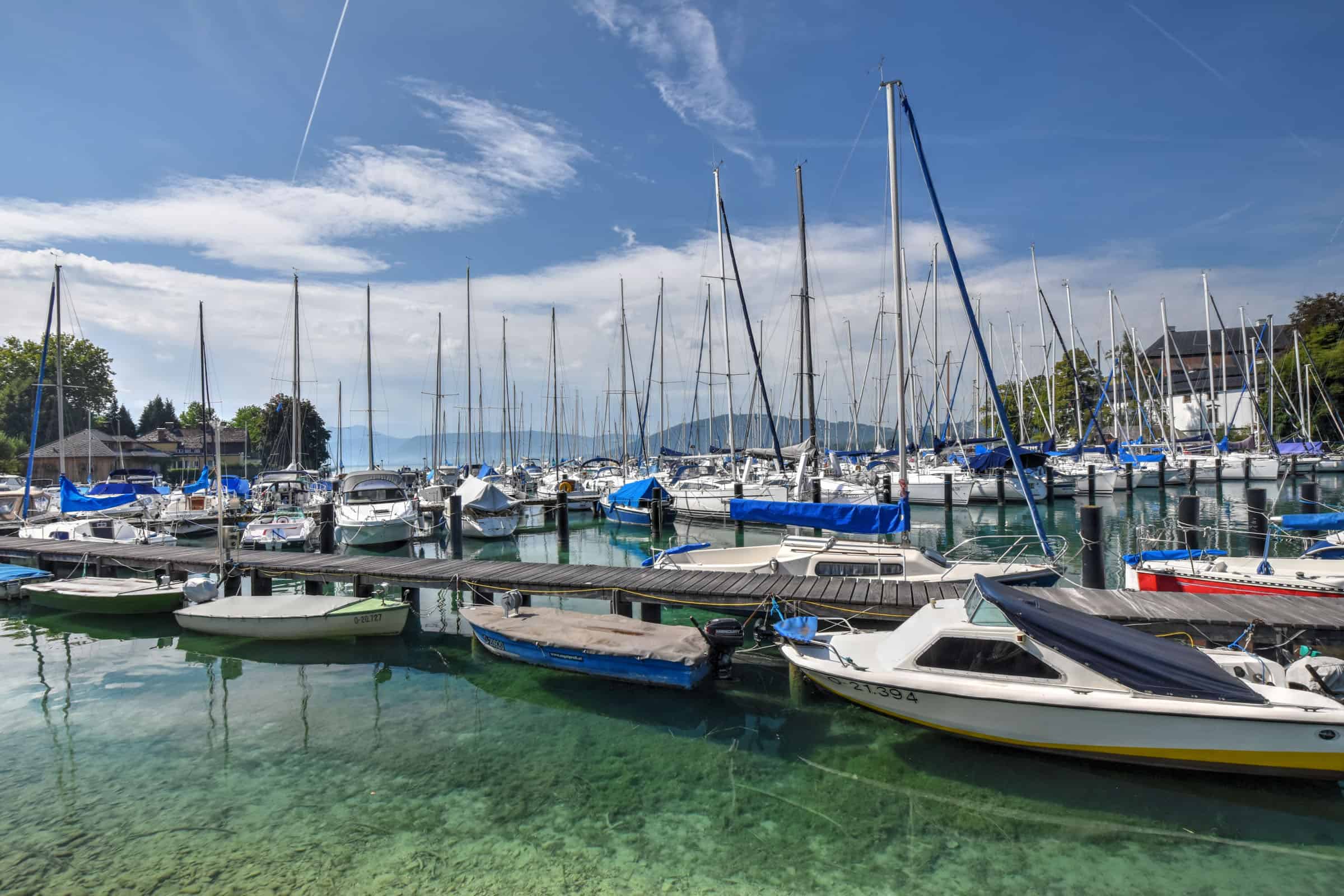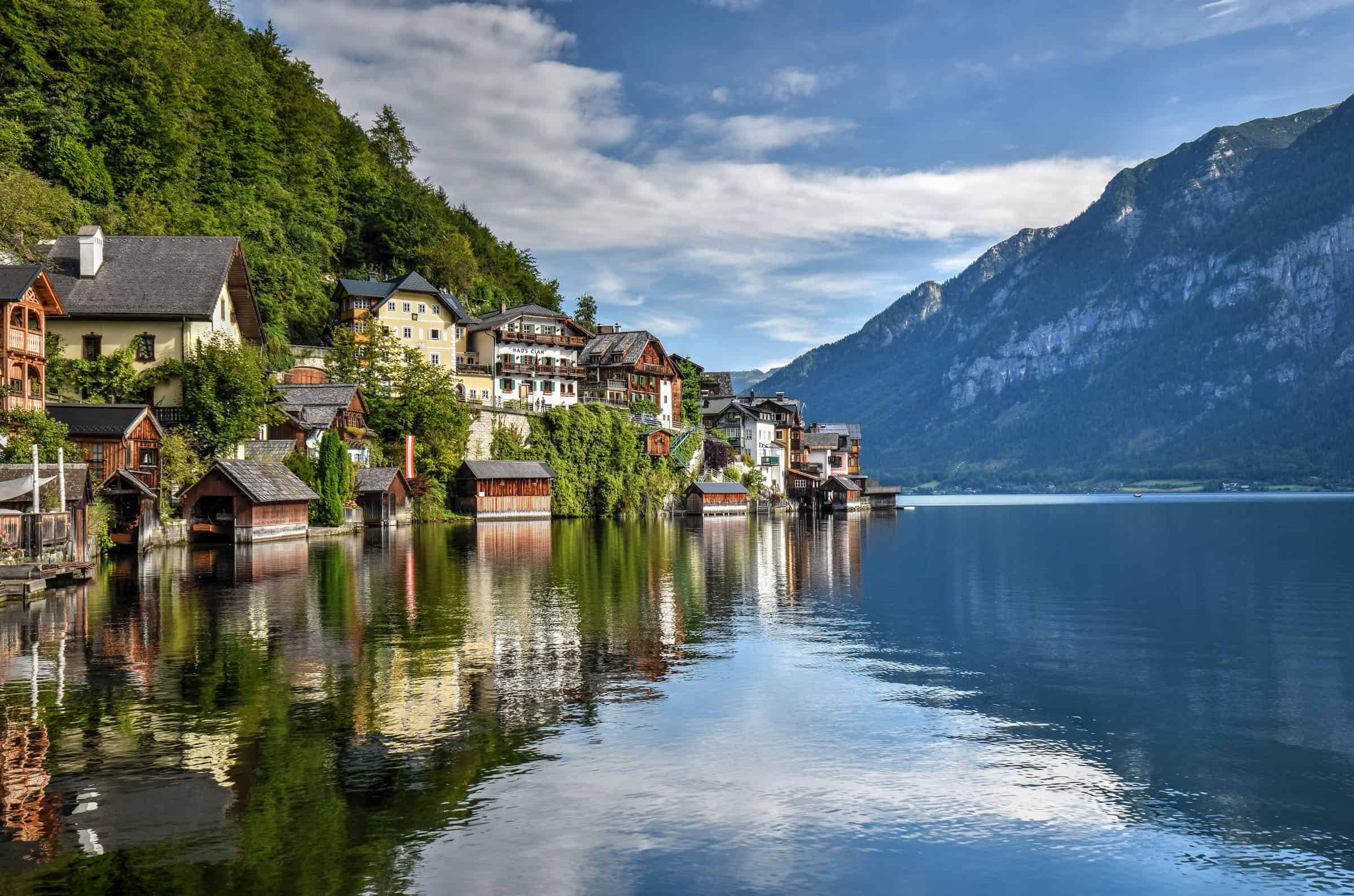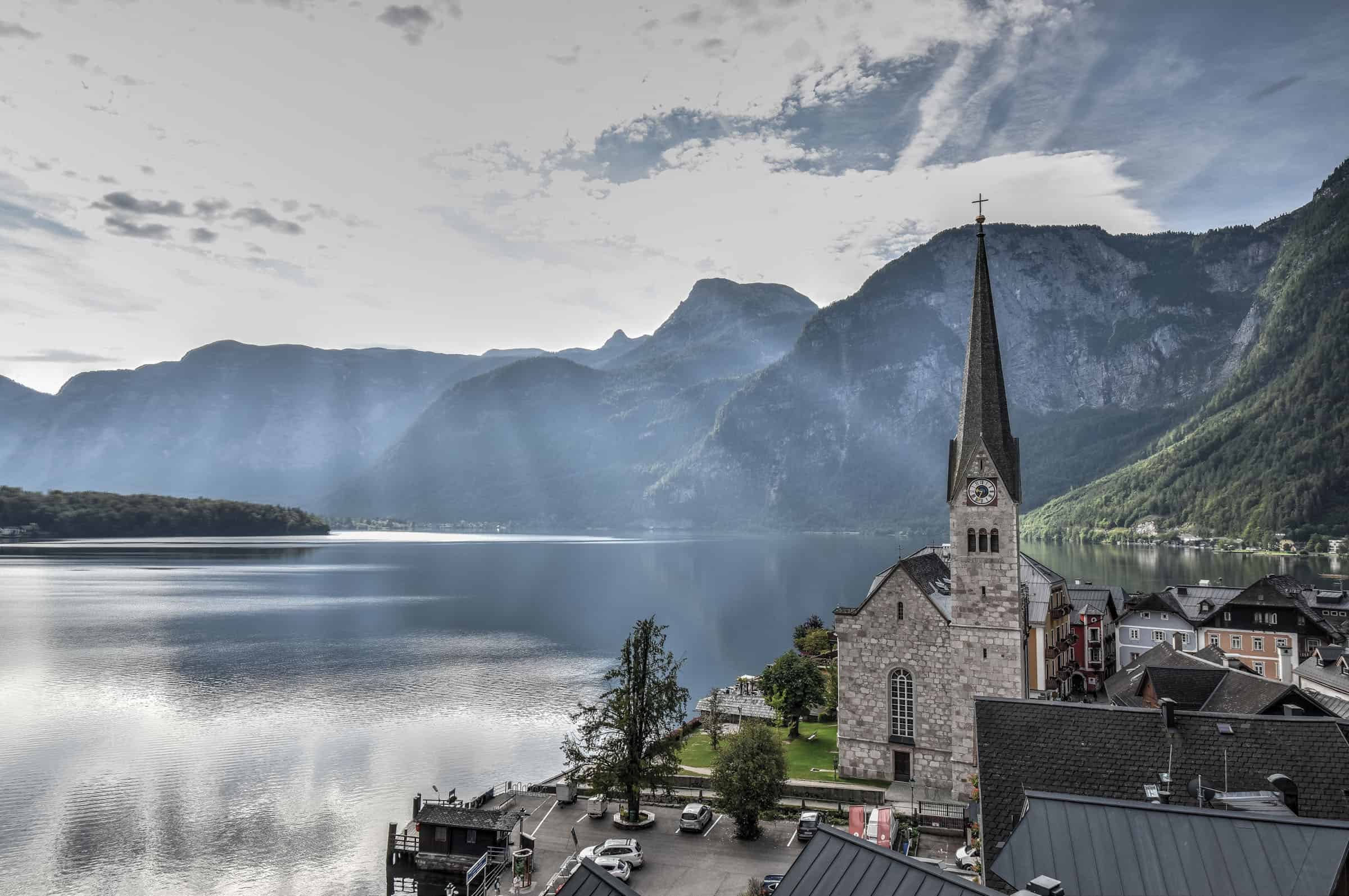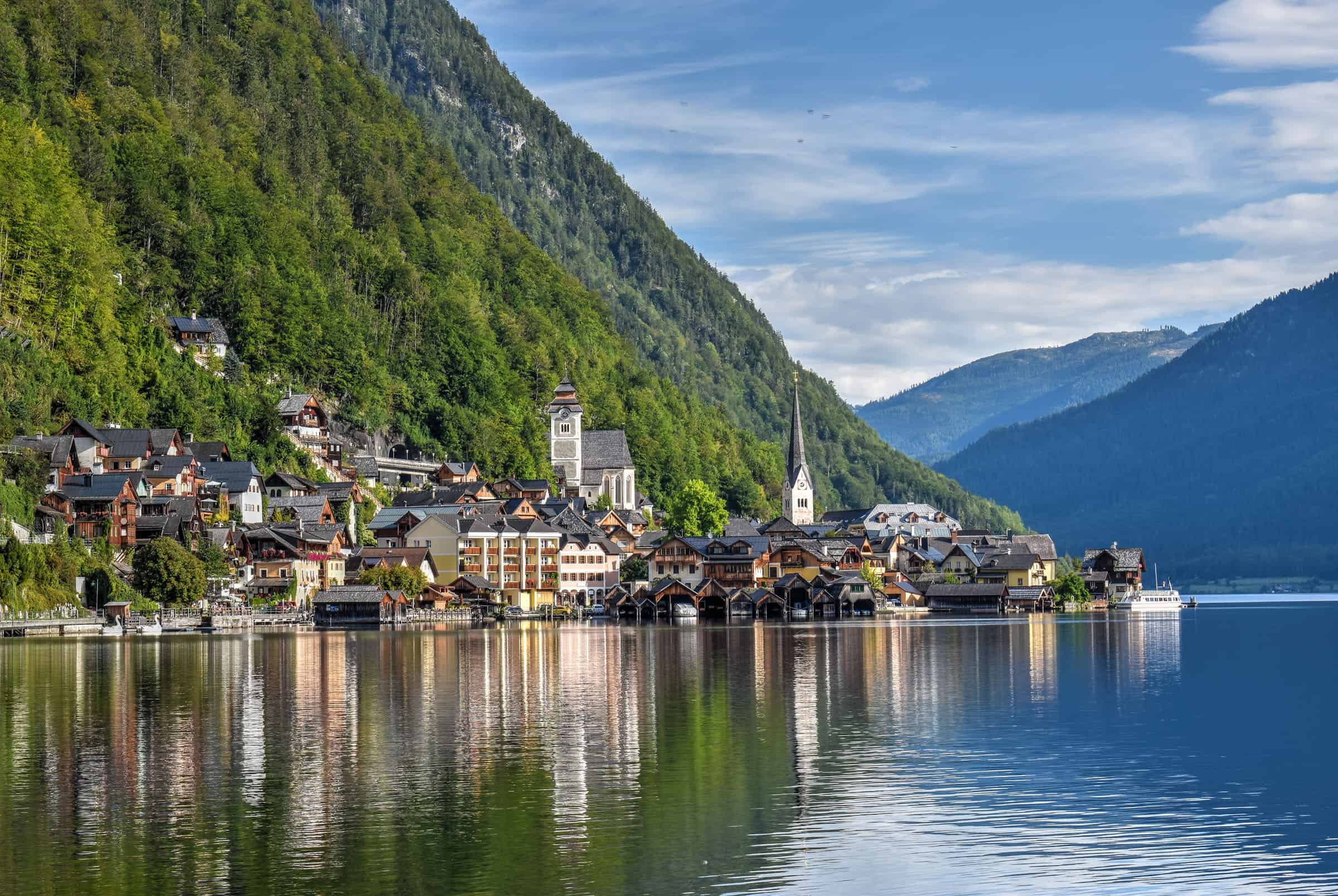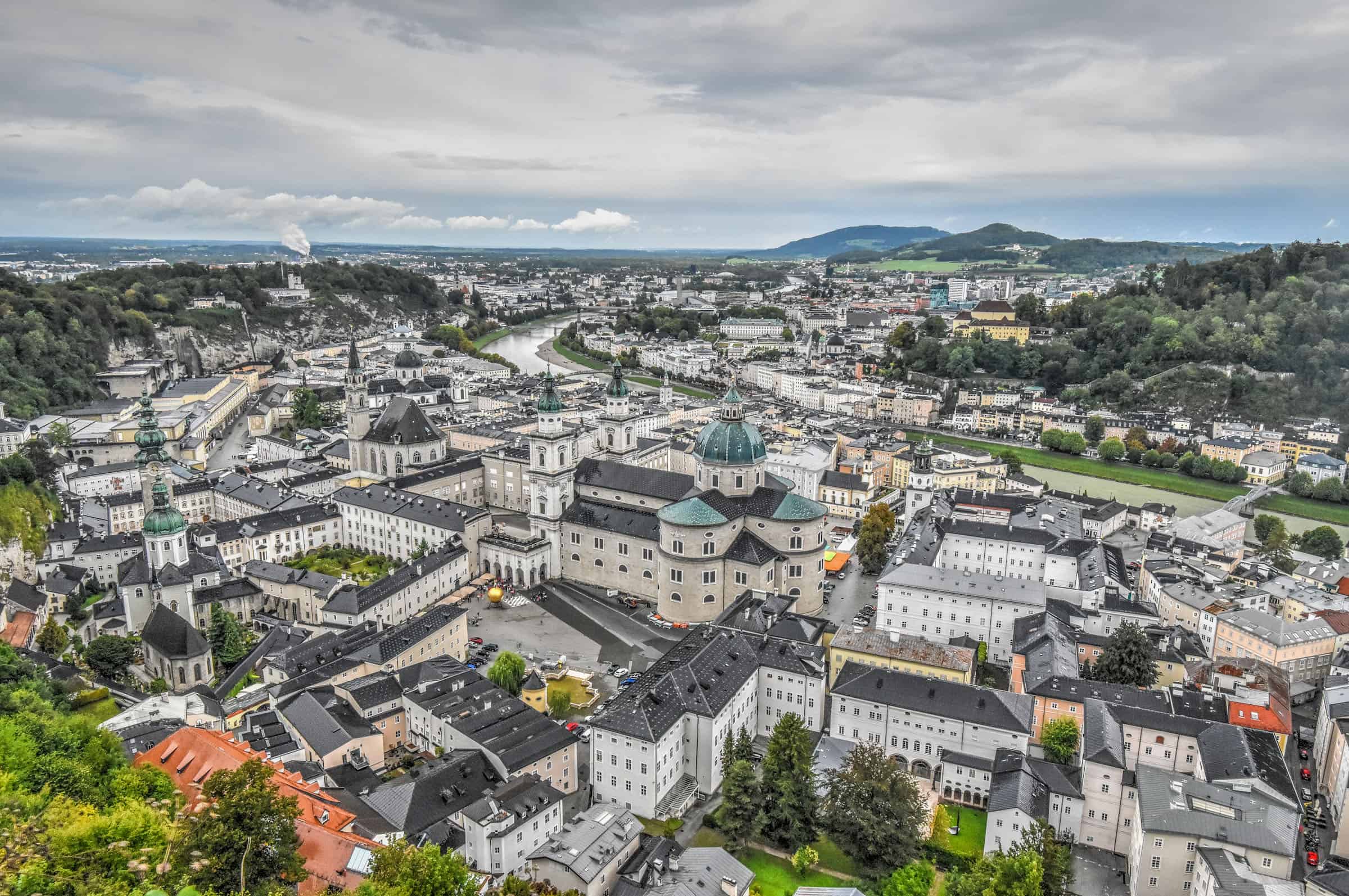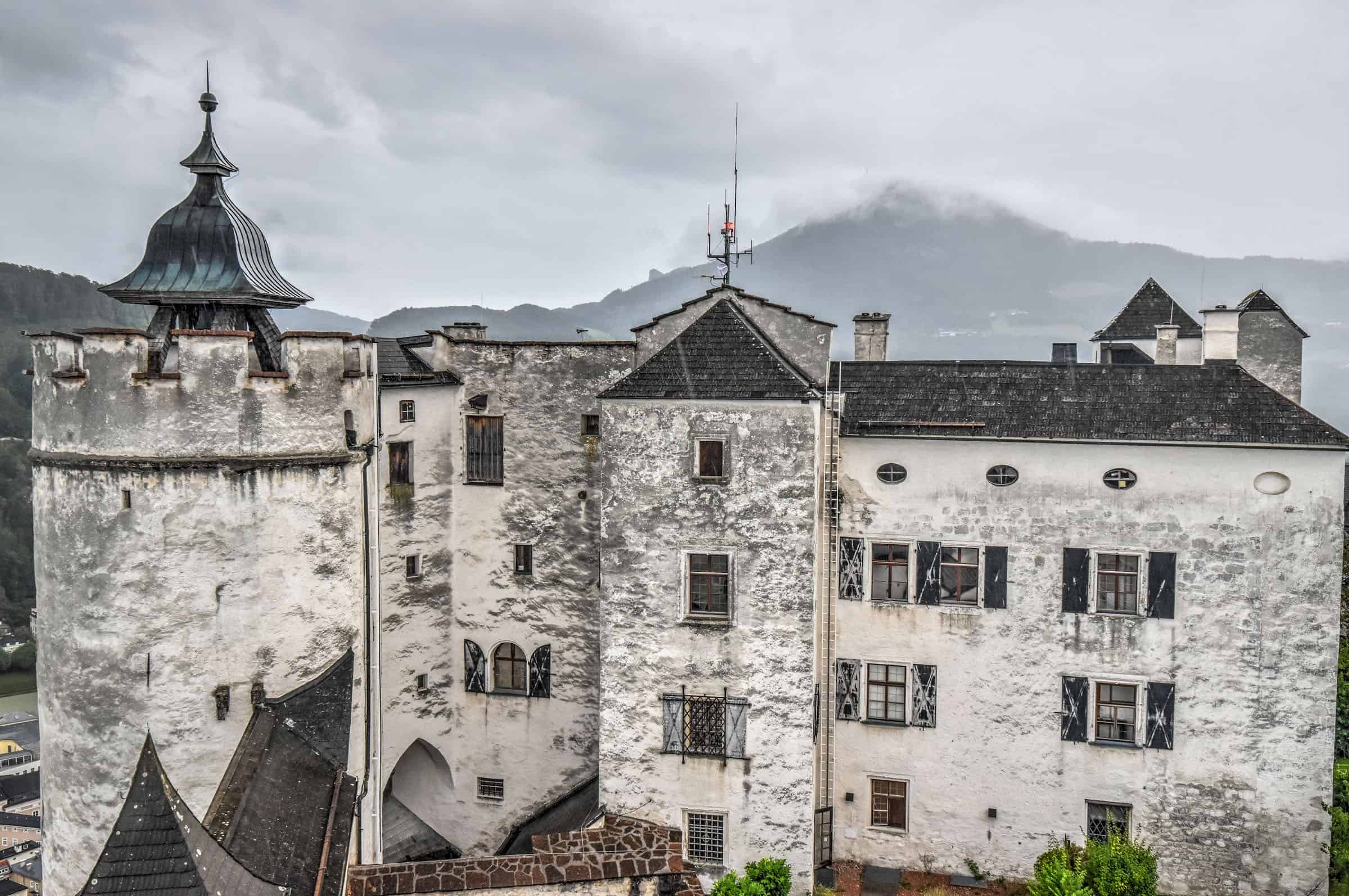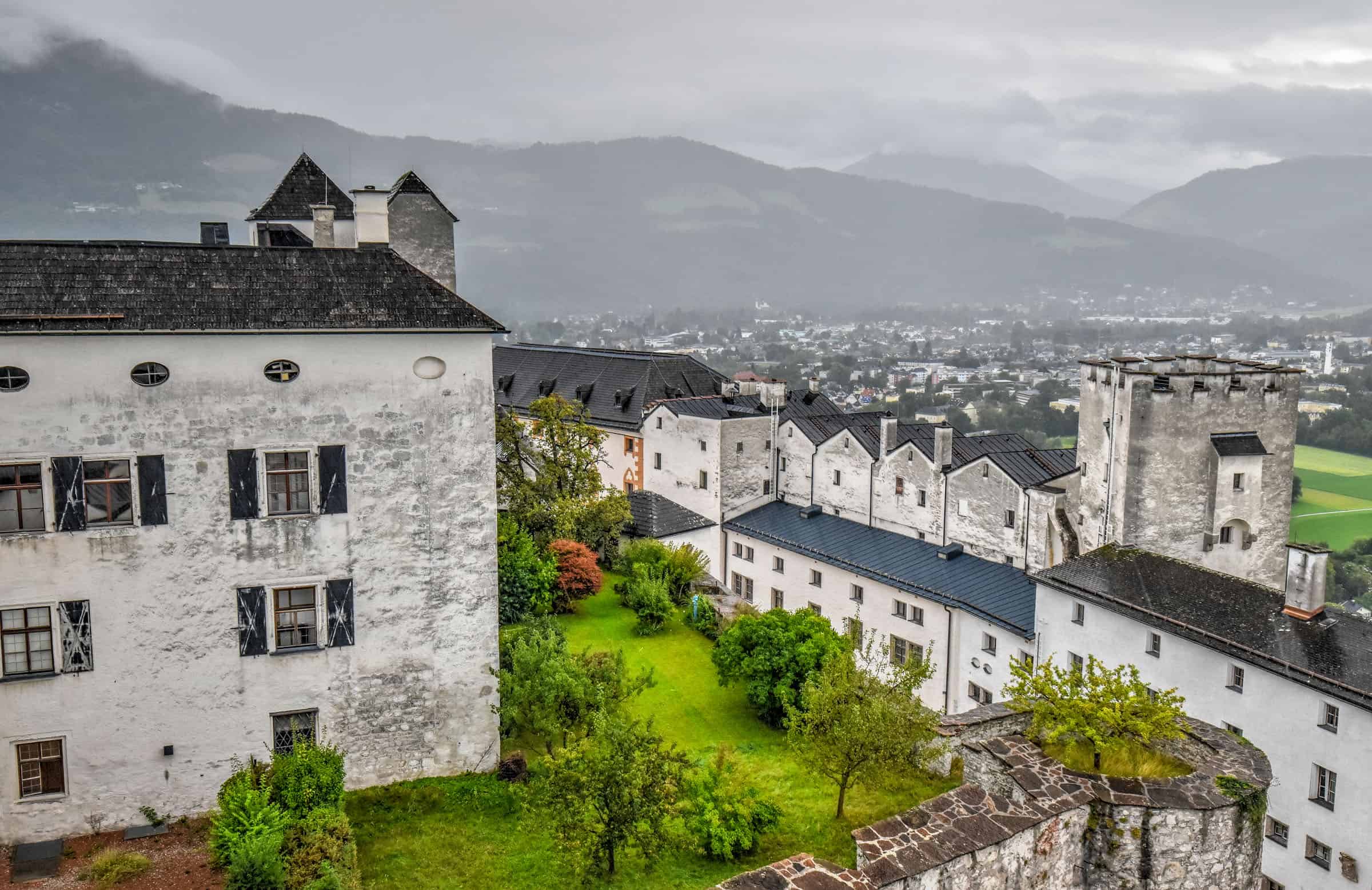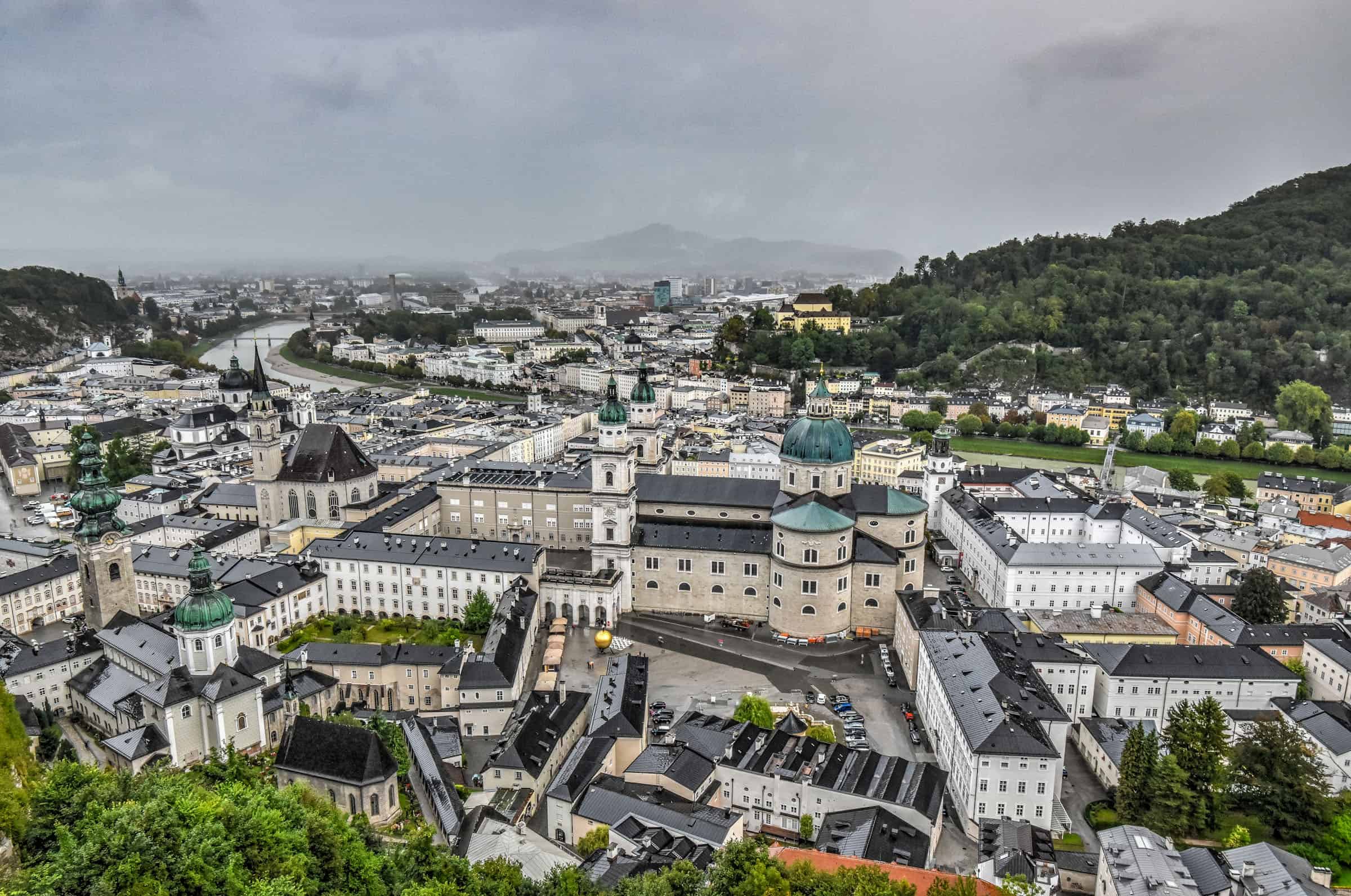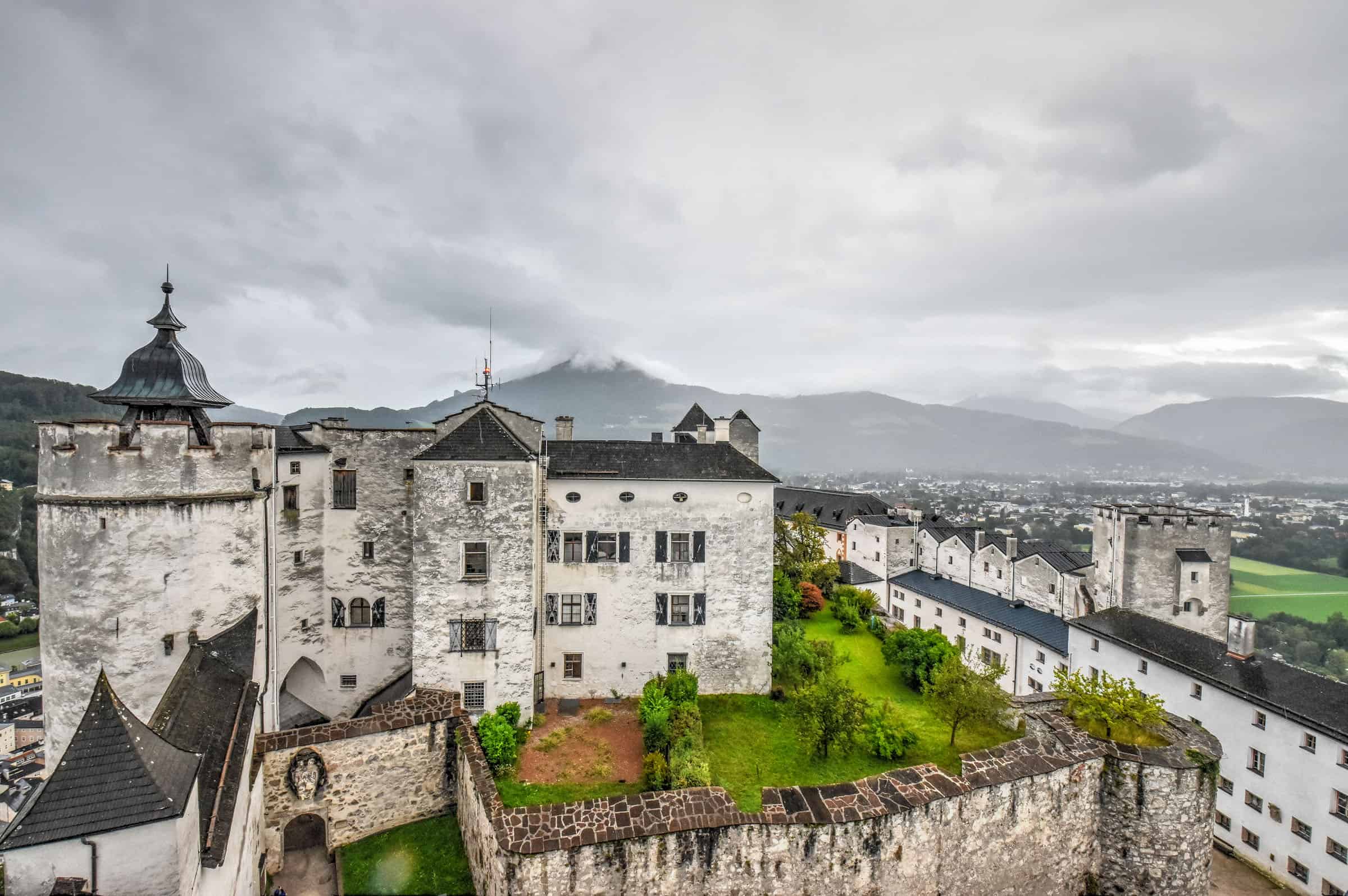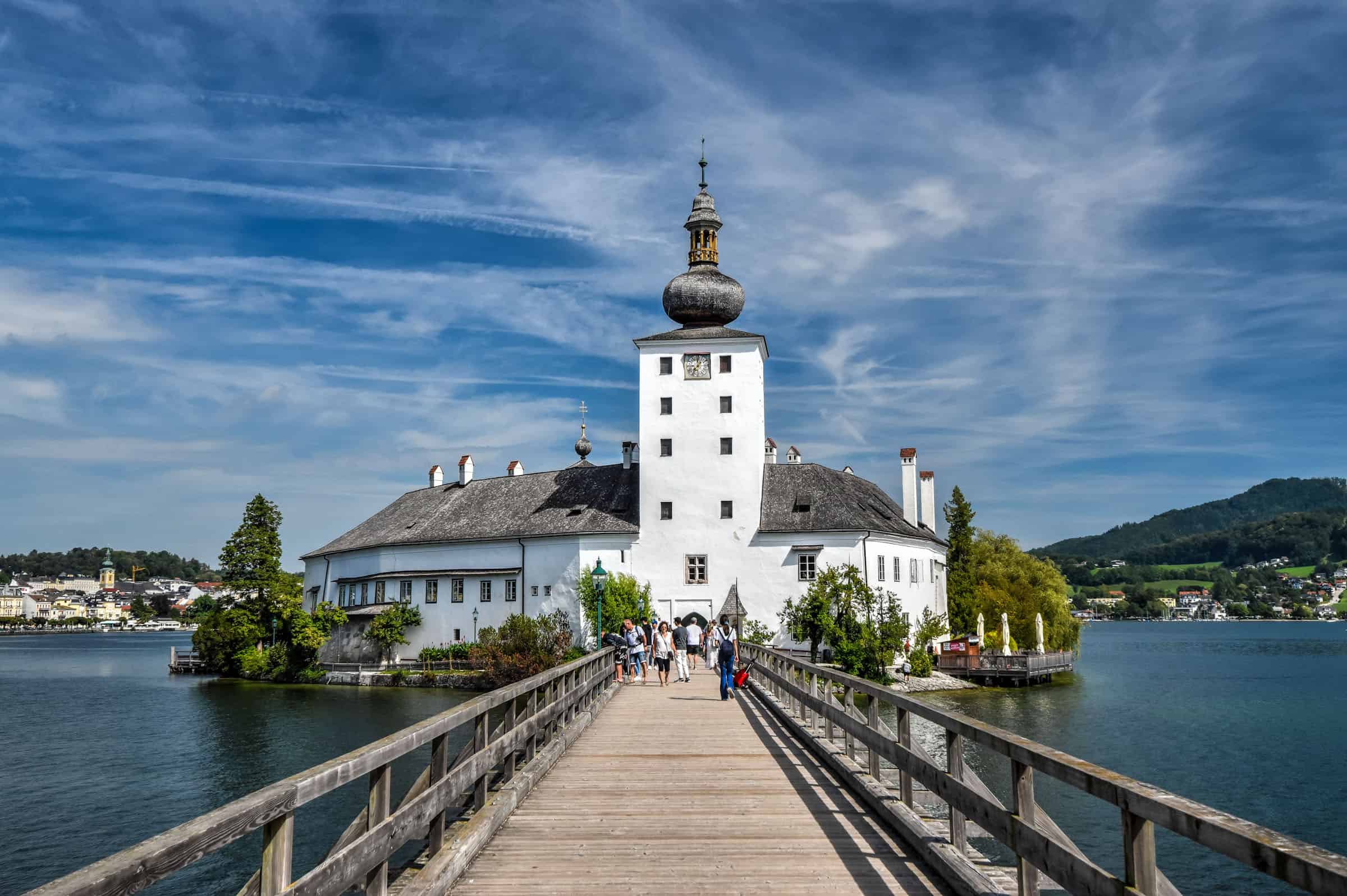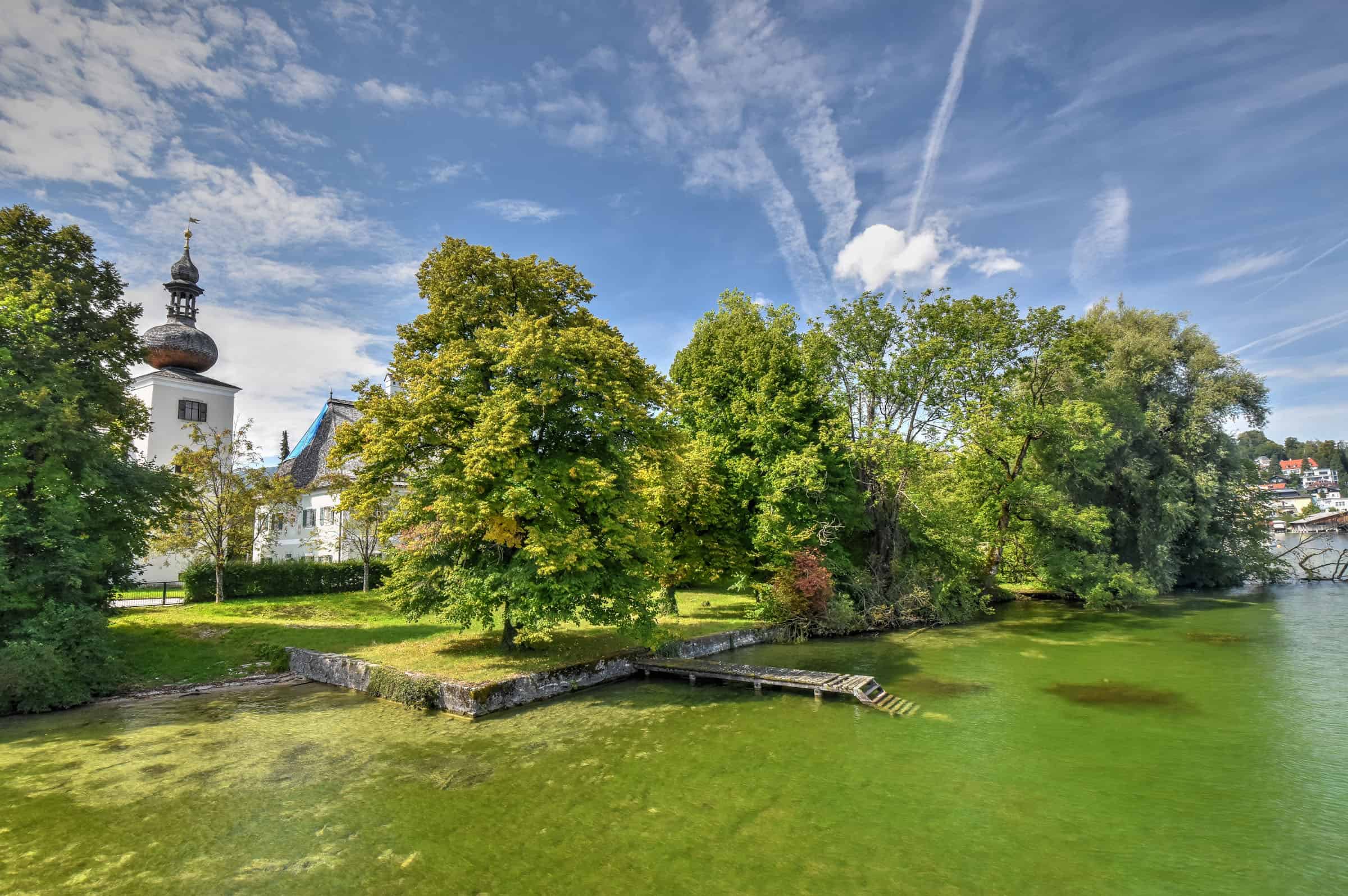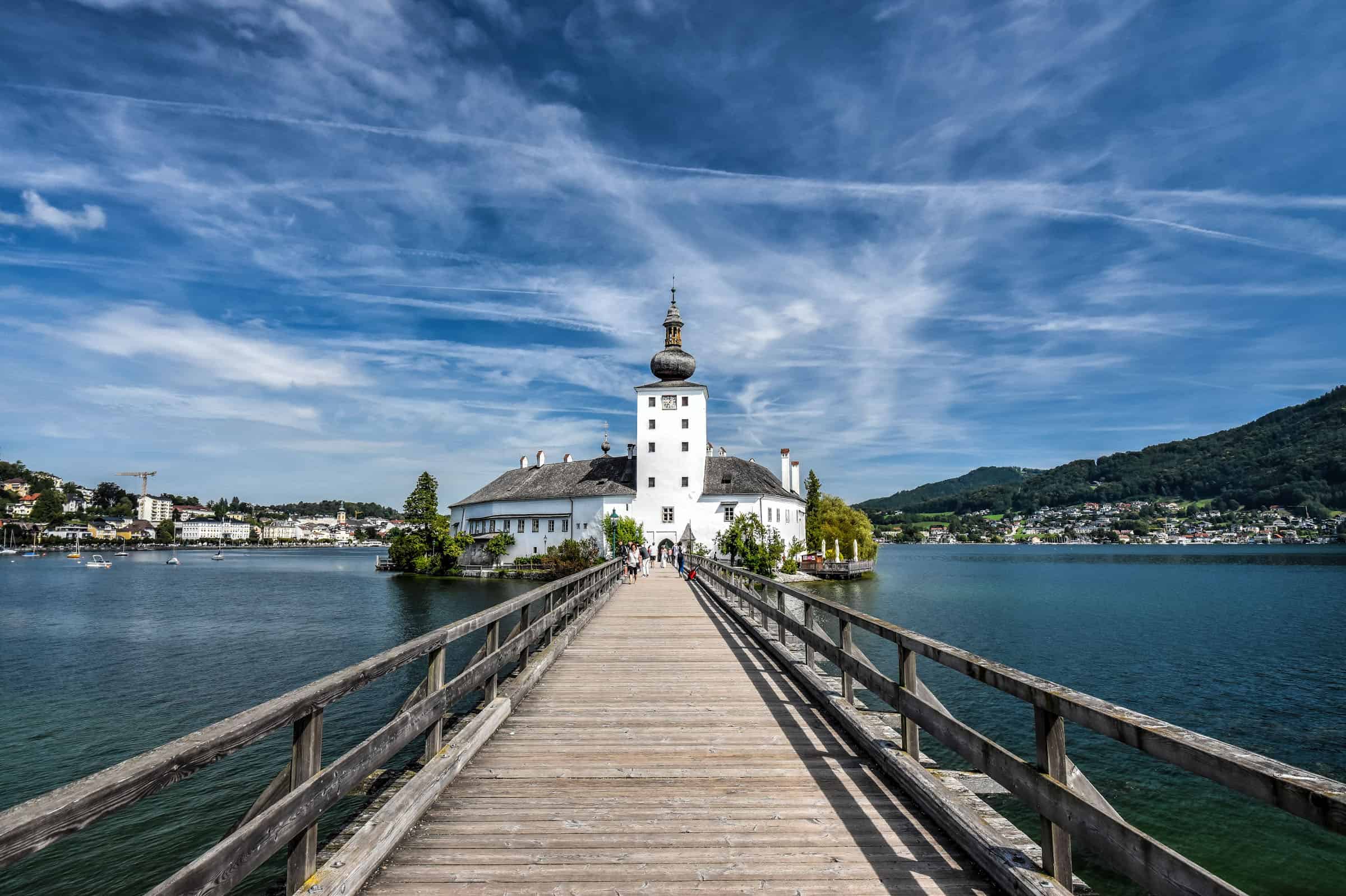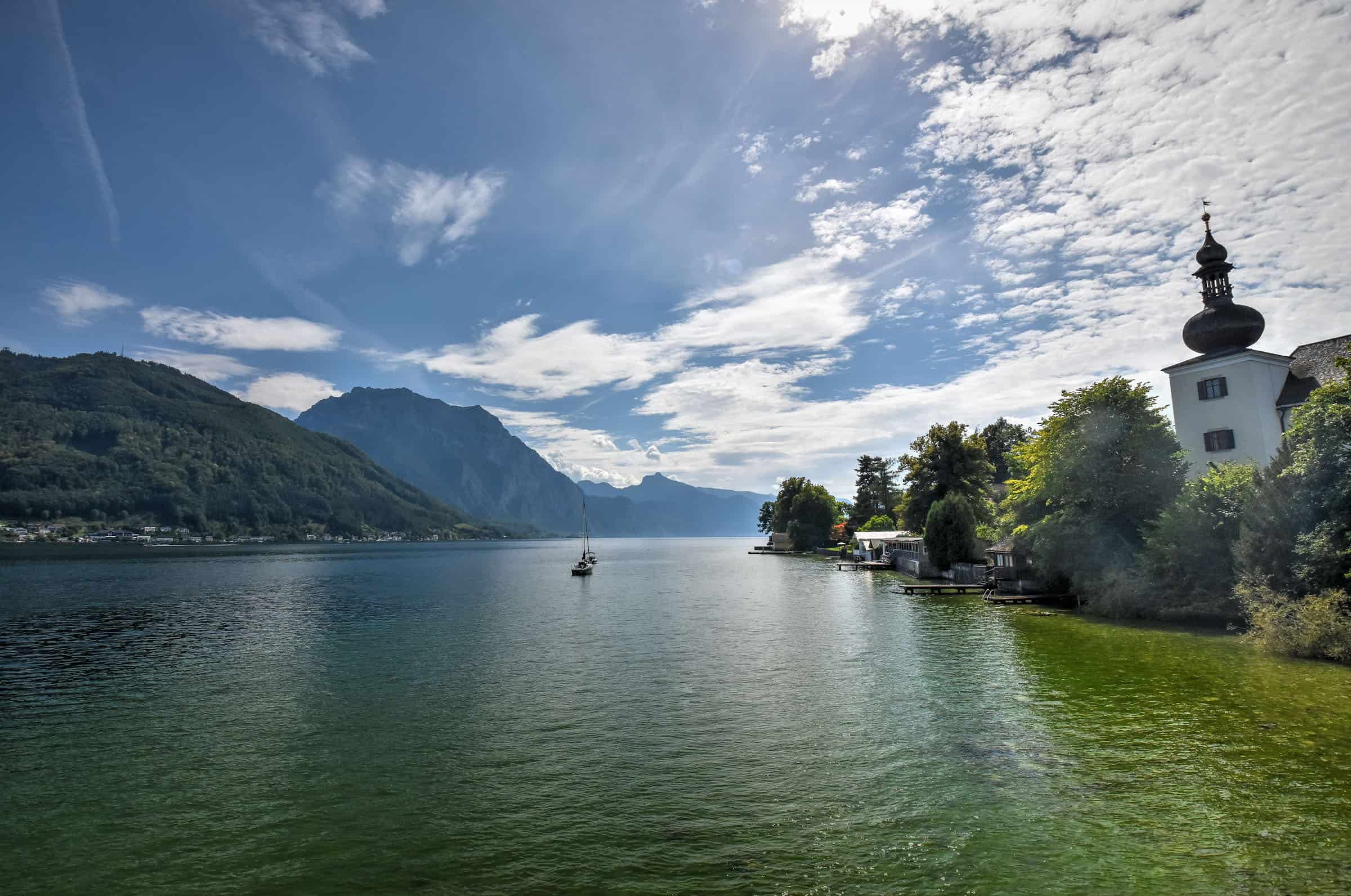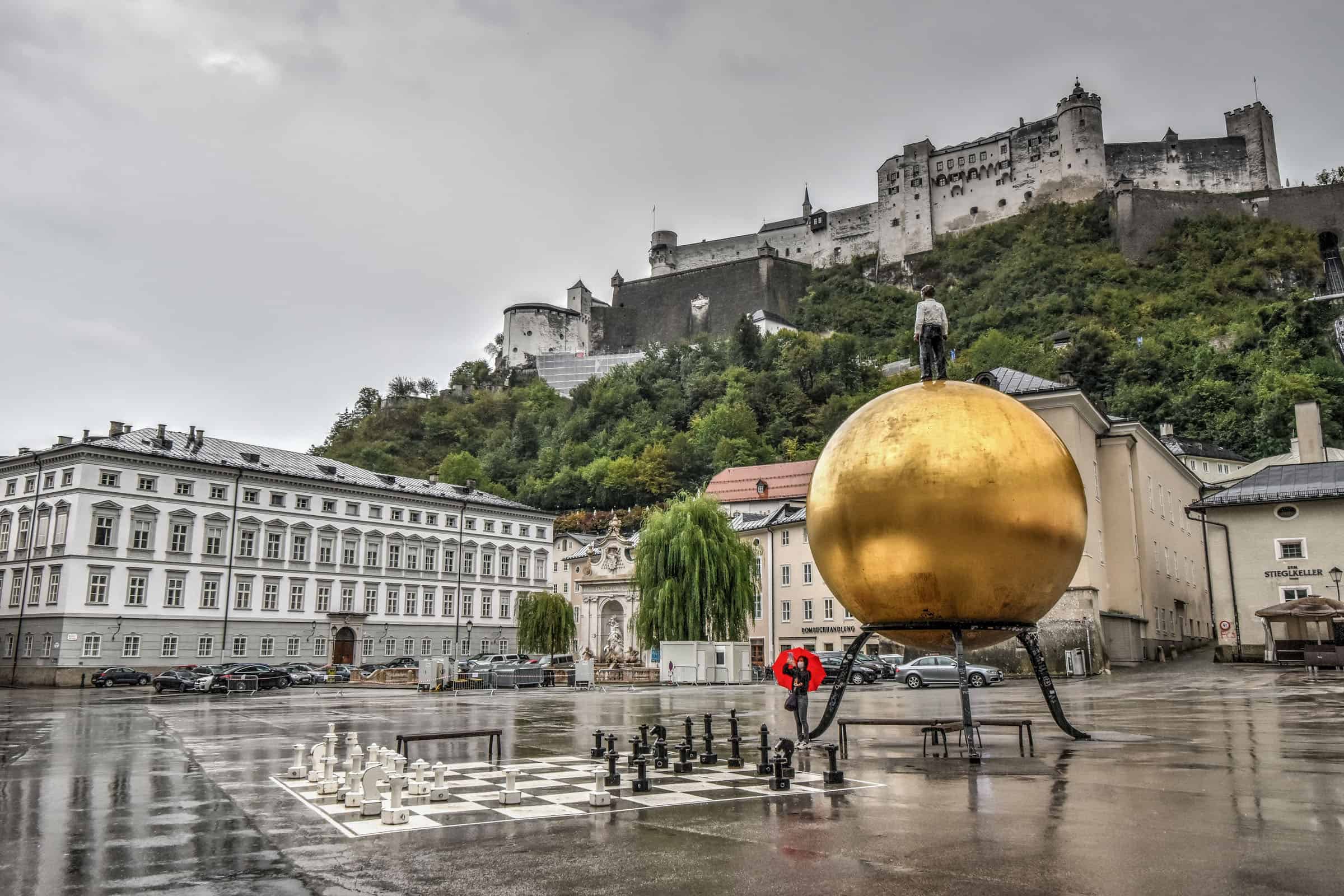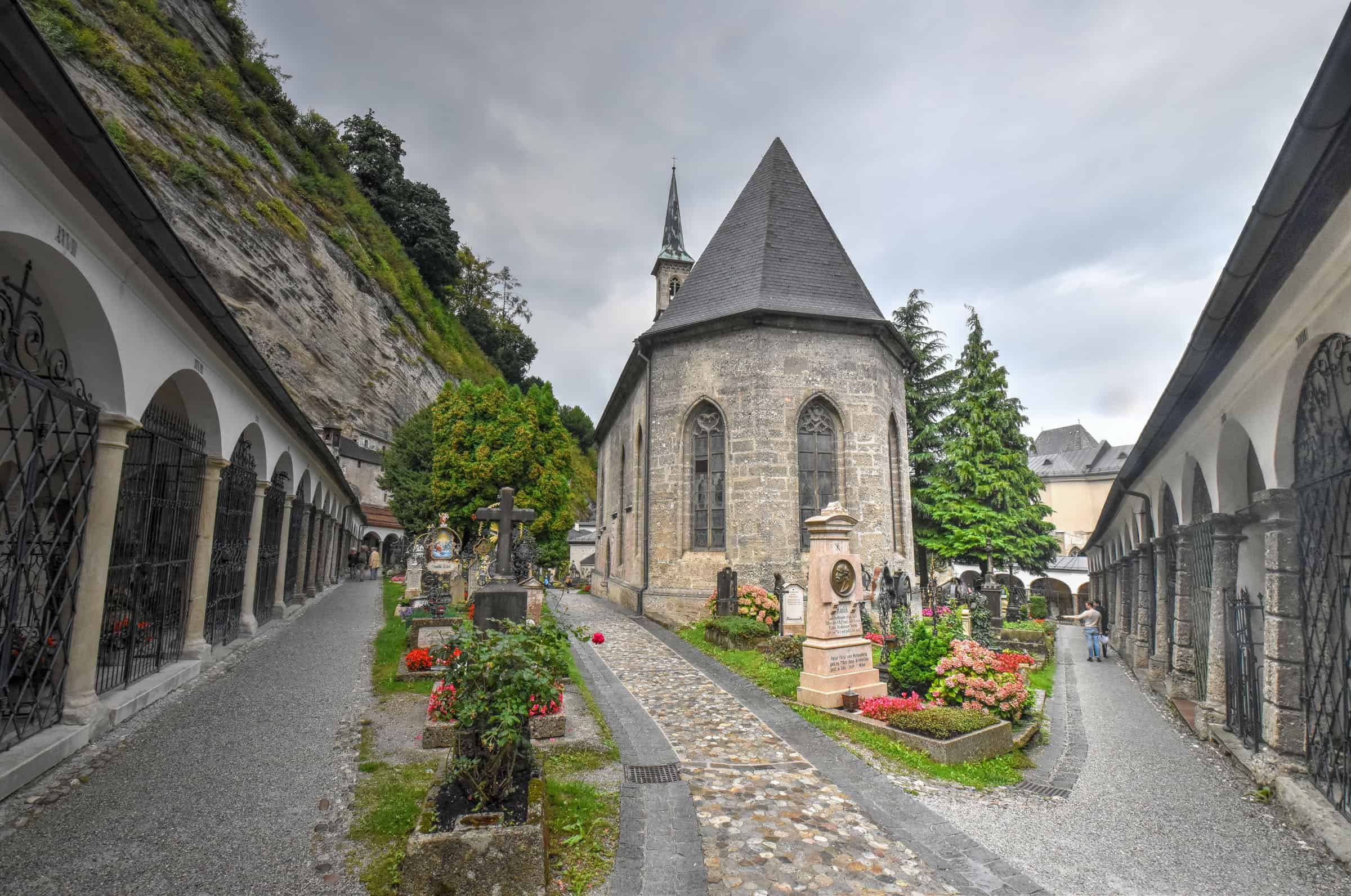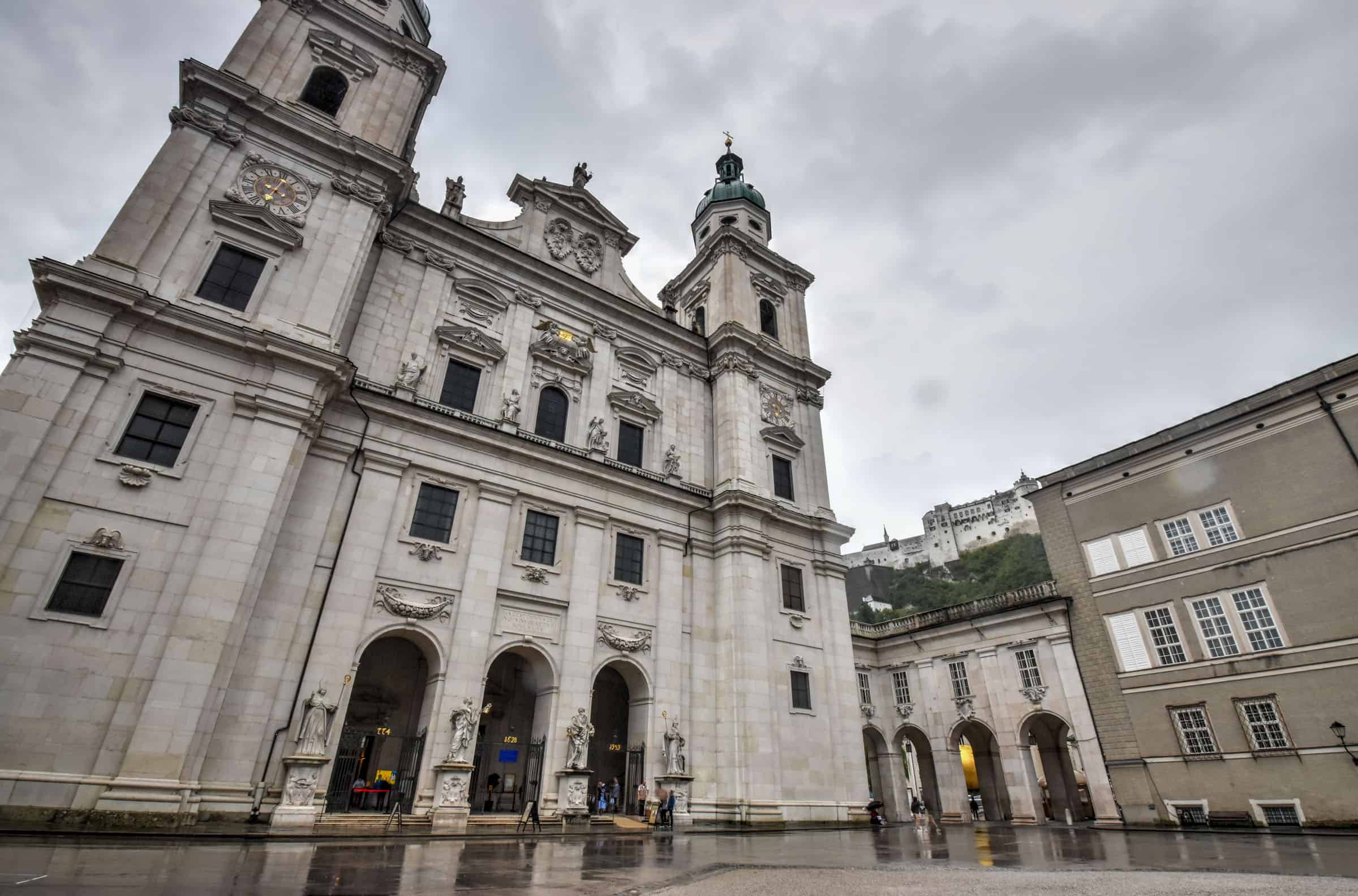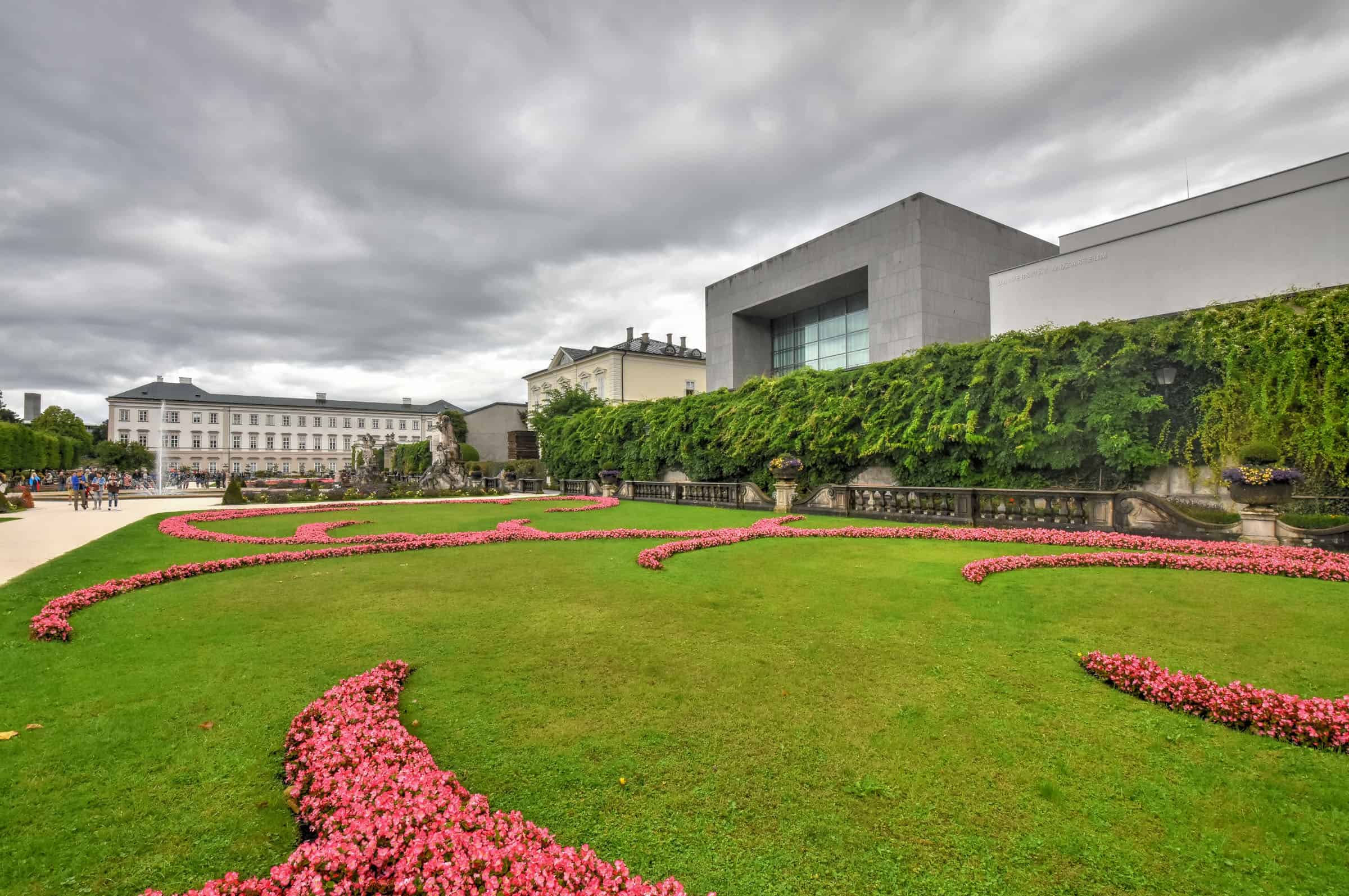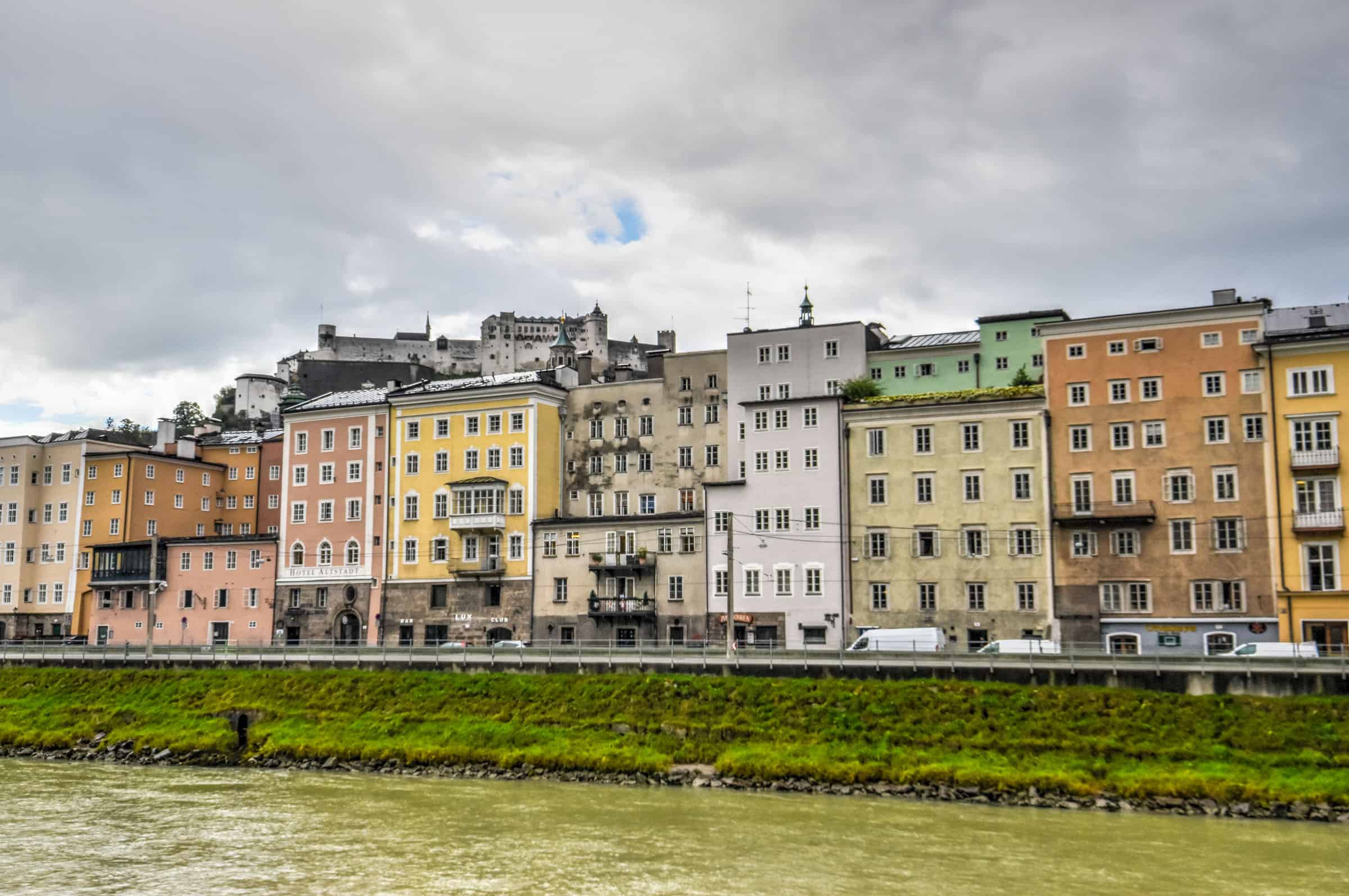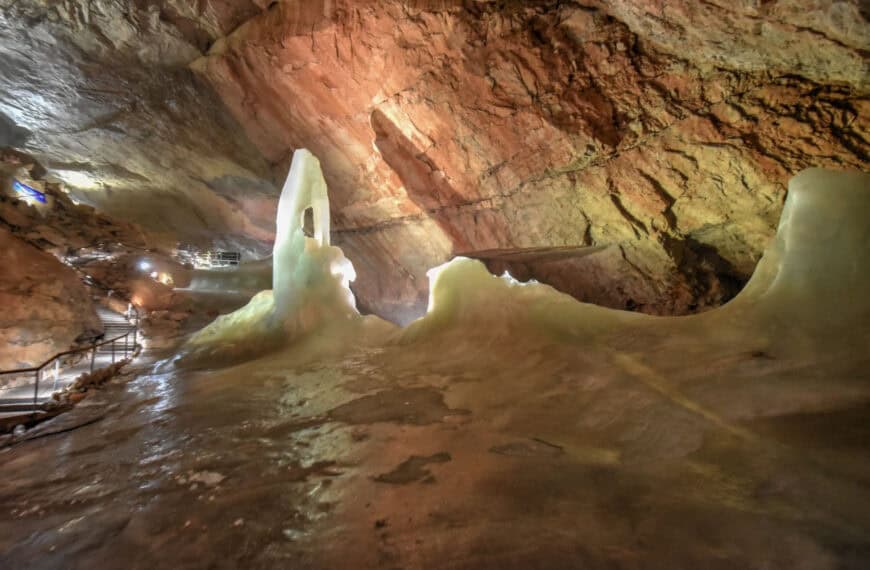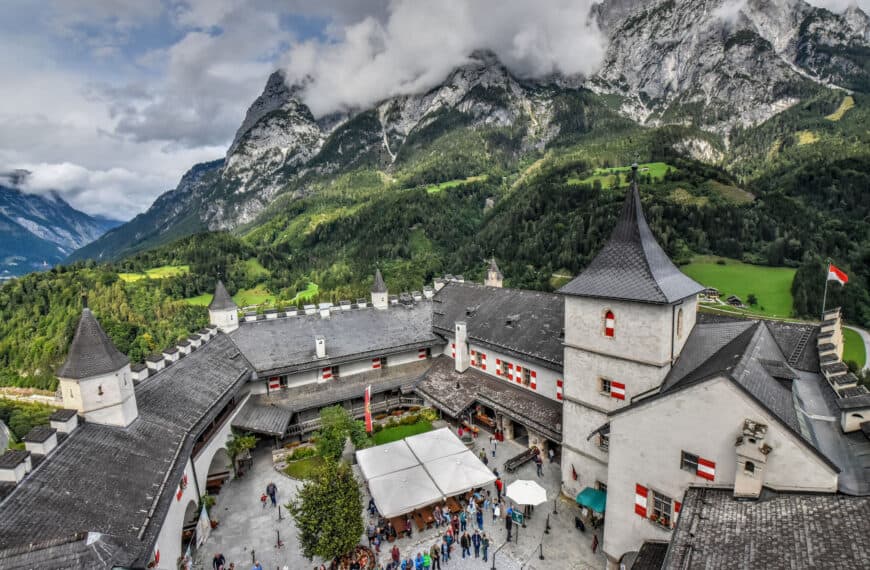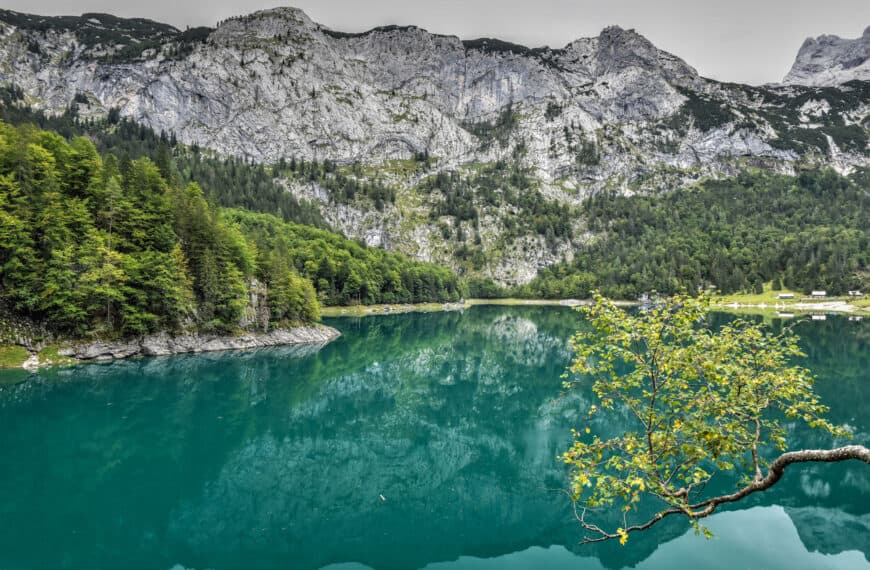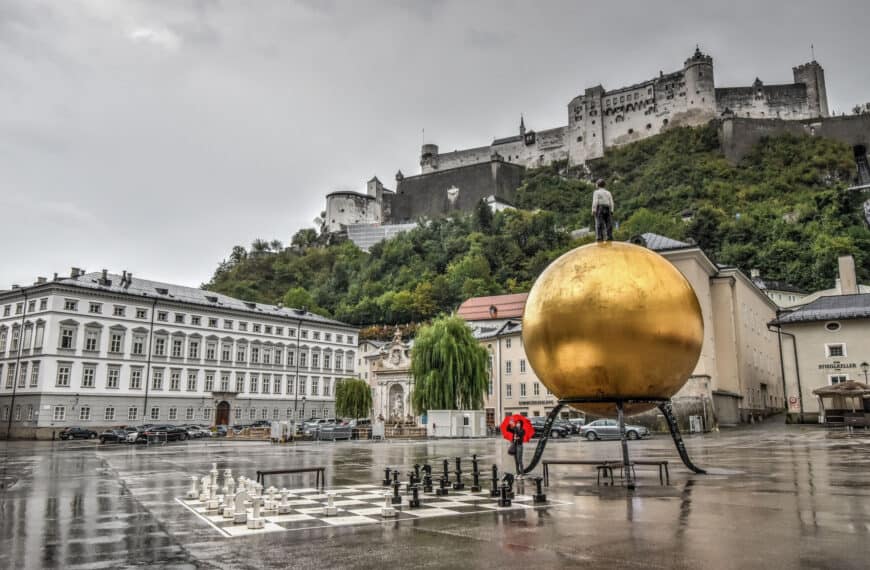The Salzkammergut region is without a doubt one of Austria’s most beautiful. It is home to a myriad of splendid subalpine lakes, each more beautiful than the next, set amongst towering mountains all around. Whether you’re staying in the region for a few days or visiting on day trips from Salzburg, there are many must-see attractions to keep you busy, including idyllic lakeside towns such as Hallstatt and St Wolfgang, beautiful hiking trails, boating opportunities, visiting salt mines and ice caves, and so much more. To help you plan the perfect visit to the region, we put together this travel guide on the Best Things to See and Do in the Salzkammergut Lake district.
Disclosure: This page (Best Things to See and Do in the Salzkammergut) may contain product affiliate links. At no additional cost to you, we may receive a commission for purchases made through these links. More details can be found on our disclosure and policies page.
You might also be interested in these pages:
Perfect Road Trip Itinerary in the Salzkammergut
Best Things to See and Do in Salzburg
Best Things to See and Do in Hallstatt








Orientation – Salzkammergut Location
The Salzkammergut region occupies an area of about 11.5 sq km, immediately east of Salzburg, Austria. Its western limits are very close to the German border, with Berchtesgaden National Park and the stunning Königssee on the other side.
The region isn’t however an official province of Austria. The map from the official Salzkammergut tourism website below approximates the region’s borders), as it spans parts of the Salzburg, Upper Austria and Styria provinces. Therefore, there is no exact definition regarding where the region starts or ends, and it is roughly centred around its largest town, Bad Ischl, known for its numerous spa resorts.

The Salzkammergut region is best explored by car in our opinion. Although there is public transit available, the routes are rather infrequent making it difficult to visit multiple attractions within a single day.
If you need to book a rental vehicle for your travels, we highly recommend using Discover Cars to get the best rates on your rental in Austria or Germany.
We also highly recommend Airalo (eSIM card) for your connectivity needs when travelling abroad. Airalo is the world’s first and largest eSIM store with eSIM plans for 200+ countries and regions worldwide.
Important: All Austrian motorways (“Autobahn”) and expressways (“S” roads) are subject to tolls. All cars, motorbikes and camper vans must either properly display a toll sticker or have purchased online a digital vignette when they plan to drive onto a motorway or expressway. Vignettes with periods of validity of 10 days, 2 months or 1 year are available from more than 6,000 outlets in Austria and neighbouring countries, and digital vignettes can be purchased from the ASFINAG website. They are not prohibitively expensive — for instance, the 10-day vignette for cars costs €11.50.
If you are interested in planning a detailed road trip itinerary in the region, we recommend checking out our Salzkammergut Road Trip Itinerary guide. The guide covers the best places to stay in the area, how long to stay in the Salzkammergut, and how to organize each day.
If you are staying in Salzburg and looking for day trip options, we recommend you check out our separate guide on the Best Day Trips from Salzburg. There is a fair bit of content overlap with the current page, but it is organized differently as attractions are grouped together by geographical location relative to Salzburg.
Alternatively, if you are limited on time or don’t plan on renting your own vehicle, joining an organized group tour could be a good idea. There are several great tours that explore the Salzkammergut region with departures from Salzburg:
If you are a fan of the Sound of Music, several great tours focus on sights and locations that were featured in the movie:
About the Salzkammergut
The word Salzkammergut roughly translates to “salt domain”, and shares a similar history and tradition of salt trading to nearby Salzburg, a city whose name translates to “salt castle”. The historic importance of the salt trade indeed explains why there are several salt mines in and around Salzkammergut that you can visit. In fact, the world’s oldest working salt mine is in Hallstatt. Today, the Salzkammergut region is one of the more popular resort areas in Austria, particularly among nature lovers and outdoor enthusiasts.
Often referred to as the Salzkammergut Lake District, the region is home to 76 lakes nestled in between scenic rolling hills and towering mountain peaks. Some of the larger and more famous lakes include Wolfgangsee, Mondsee, Attersee, Traunsee, Hallstatter See, and Fuschlsee. Some of the most well-known peaks are those of the Schafberg near St Wolfgang, where a cog steam train whisks you to the summit and the impressive Dachstein mountains near Hallstatt.
Part of the Salzkammergut region was also designated a UNESCO World Heritage Site in 1997. Specifically, the natural landscape of the historic Hallstatt-Dachstein region is distinguished by its rare fauna and flora, important archaeological and speleological sites, and its cultural continuity spanning more than 4500 years.
Discover the Salzkammergut Lakes
One of the best things to see and do in the Salzkammergut is simply to drive around the area and discover its beautiful lakes. Most of the larger lakes have roads along at least one side with often several pull-offs with viewpoints. Most of them also have scenic lakeside towns waiting to be discovered. There are also a few lakes that are more isolated and off the main roads, some with hiking trails around them.
Wolfgangsee
Wolfgangsee is one of the Salzkammergut’s most popular lakes, in part because it is bordered by the three towns of St. Wolfgang, St. Gilgen and Strobl, in addition to several smaller villages such as Ried and Abersee, providing visitors with many options for lodging and exploration. There are lots of easy walks and more difficult hiking trails that start around the lake, and the town of St Wolfgang is home to Austria’s steepest mountain cog train, the Schafbergbahn (more on the train below).






Traunsee
The drive along the lake’s western shore is quite scenic as the lake is backdropped by beautiful mountains, including the imposing Traunstein. The lake itself is the deepest and by volume the largest lake located entirely within Austria. There’s also a beautiful small castle near the northern of the lake, Schloss Ort (more on that castle later).





At the northern of the lake lies the town of Gmunden, which has a small historical town center. It’s also from where you take a cable car to visit the Baumwipfelpfad Salzkammergut on Grünberg mountain, a tree-top path and 39-meter high observation tower, one which you can ride down from through its 75-meter-long tunnel slide.
Attersee
Traunsee may be the deepest lake, but Attersee is the largest lake by surface area located entirely within Austria. It’s also one of the few lakes of the Salzkammergut that has roads that fully encircle the lake (along with Mondsee) – you can loop around the lake without stopping in about an hour. The drive is slightly more scenic along the eastern side as the road hugs the shoreline more closely and there are a few more roadside car parks to stop and enjoy the view. There’s also an Alpaca farm that you can visit along the eastern shore.



Most of the main attractions are towards the northern end of the lake, however, such as the Gustav Klimt Center. The center honours the famous Austrian painter Gustav Klimt, who from 1900 to 1916, regularly spent his summers along the shores of Attersee. The center focuses on Gustav Klimt’s life and work in this region. Beyond the center, you can enjoy a pleasant stroll around the nearby boardwalk and visit Klimt’s old family home.
Hallstatter See
Although most associate Hallstatter See with the fairytale village of Hallstatt, the lake in itself is quite beautiful and scenic. The lake is quite massive, stretching 8.5 km long and up to 125 meters deep. It’s long and narrow, surrounded by towering mountains, giving it a definite Norwegian Fjord look. You can rent one of several electric boats, rowing boats, swan-shaped pedal boats, or stand-up paddle boards (SUP) to enjoy some great times on the water.



Other lakes worthy of discovery
Other lakes to discover in the Salzkammergut
There are several smaller lakes to discover that offer a more relaxed setting. These include Grundlsee, and Altausseer See, both of which are a short distance east of Hallstatt, and Fuschlsee, which lies between Salzburg and Wolfgangsee.
Altausseer See is the smallest of the three and has a beautiful walking path that loops around the lake, which can be completed in about 75-90 minutes. Lake Altaussee is also suitable for ice skating and curling during the colder months, as it often freezes over completely in winter. An interesting anecdote is that the lake and the hunting lodge Seewiese were filming locations for the James Bond film Spectre in 2015.
Although there aren’t many attractions around Fuschlsee, one quick worthy stop might be to see the futuristic-looking Red Bull HQ, located just outside Fuschl.
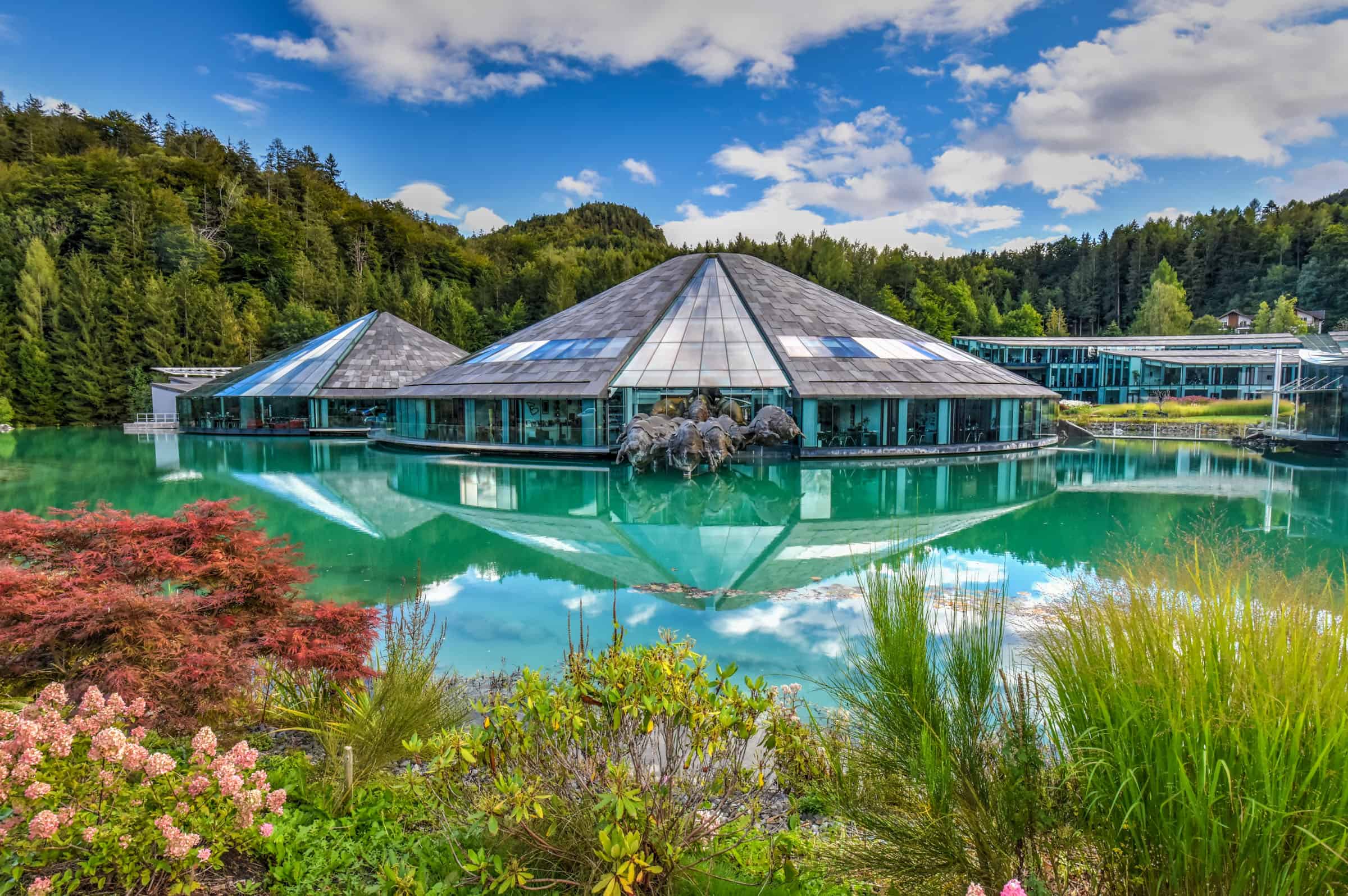
A popular intermediate-sized lake is Mondsee, north of Wolfgangsee and west of Attersee, where you will a beautifully preserved old town and one of the most stunning churches in the Salzkammergut, the Abbey Church of Mondsee.
Explore Idyllic Lakeside Towns
There is no town more popular in the Salzkammergut than the beautiful Hallstatt, but that doesn’t mean it is the only town worth visiting. In particular, St Wolfgang, located along the northern shore of the beautiful Wolfgangsee Lake, is very much deserving of a visit. With more time in the area, St Gilgen (which can be visited by boat from St Wolfgang) and Mondsee (located by Mondsee Lake) are also quite scenic.
Hallstatt
The picture-perfect postcard village of Hallstatt is located in the southeastern corner of the Salzkammergut. Although it can get overcrowded at times, it remains nonetheless a must-visit destination in our opinion — early mornings and evenings can be quieter making it more likely that you will enjoy a fun stroll through this historic small town. And even if it does get too crowded, there are plenty of activities where you can somewhat escape the crowds, such as visiting the world’s oldest salt mine or heading down the road to Dachstein Krippenstein, a mountain where several great surprises await including a unique ice cave and a stunning viewing platform (see below).





For more information and tips on visiting Hallstatt, check out our travel guide on the Best Things to See and Do in Hallstatt.
St Wolfgang
Located along the shores of Lake Wolfgangsee in the heart of the Salzkammergut, the small town of St Wolfgang deserves to be discovered. Though many come to town to experience the unique cog train (Austria’s steepest cog railway, the SchafbergBahn — more on the cog train below) that whisks passengers to the summit of Schafberg Mountain, there’s so much more to experience in St Wolfgang. In particular, it has a beautiful, colorful and lively town center filled with cafés, shops and restaurants, but without the crowds of Hallstatt, and has several beautiful lakeside walking trails. It’s also a great place to go on a short boat cruise and visit other towns around Lake Wolfgangsee, such as St Gilgen.






For more information and tips on visiting St Wolfgang, check out our travel guide on the Best Things to See and Do in St Wolfgang.
Enjoy Easy-to-Reach Summit Panoramic Viewpoints
If you are looking for amazing panoramic aerial views without having to work too hard to get them, you are in luck! There are several great options in the area including a few cable cars and the unique Schafbergbahn cog mountain train.
Schafbergbahn cog wheel train
Austria’s steepest cog railway has been running from St. Wolfgang up the Schafberg since 1893. The train will climb 1,190 vertical meters at a maximum gradient of 26%, and the ride to the summit will take approximately 35-40 minutes. For most of the ride up, you will have stunning views of Wolfgangsee and towering mountain ranges on the other side of the lake. From the summit, you essentially have 360-panoramic views of the Salzkammergut mountains and lakes (you can see at least 5 of the major Salzkammergut lakes), not to mention the iconic summit view of the sheer drop off Schafberg’s northern face.





For information on riding the cog train to the Schafberg summit, check out our Schafbergbahn Travel Guide.
5 Fingers Viewing Platform (Dachstein Krippenstein)
Although there is some light walking/hiking involved here, worry not if you are not an avid high-elevation hiker, most of the journey up is done via cable car. Beyond the base station near Hallstatt, Krippenstein Mountain is serviced by three stations, and the 5 Fingers Viewing Platform is a short 20-minute hike from the second mountain station. The platform offers an incredible adrenaline rush as you lean over a 500m drop below you. Built in 2006, as its name suggests, the platform is shaped like a hand with 5 fingers that protrude from a sheer rock face at an altitude of 2108 meters above sea level. It offers breathtaking views of the Salzkammergut region from above Lake Hallstatt and the Krippenstein Mountain Range. For those who want to stretch their legs longer, there are great hiking trails that begin near the 5 Fingers.





For more information on this attraction, check our Travel Guide for Visiting the 5 Fingers Viewing Platform.
Other popular cable cars in the area include Grünbergseilbahn Gmunden near the northern end of Traunsee, Zwölferhorn-Seilbahn in St Gilgen, near the western end of Wolfgangsee, and Gosaukammbahn by the northern end of the Gosau Lakes area (more to come on the lakes below).
Discover the Area’s Rich Salt Mining History with Salt Mine Tours
The Salzkammergut has a long and rich history of salt mining. As we mentioned earlier, Salzkammergut roughly translates to “salt domain” and Salzburg translates to “salt castle”.
There are four main Salt Mines that are open to visitors in the area: 1) The Hallstatt salt mine (that can be reached from Hallstatt — see our Hallstatt travel guide linked above), 2) the Hallein Salt Mine (south of Salzburg – often referred too as the Salzburg mine), 3) the Berchtesgaden Salt Mine (in Germany but a short drive away), and 4) The Altaussee Salt Mine (slightly east of Hallstatt).
You can see the relative locations of each of the 4 salt mines on the map below. The Berchtesgaden Salt Mine and the Hallein Salt Mine are actually built within the same mountain but with one mine on the Austrian side and one on the German side of the border.

Even though tours of the three mines in Austria are operated by the same company (Salzwelton), each salt mine has its own sets of advantages and disadvantages depending on your interests and planned itinerary:
1) The Hallstatt Salt Mine: It can easily be visited from Hallstatt and it’s the world’s oldest salt mine. The guided tour includes a train ride and a descent down a wooden miner’s slide. However, it’s the busiest of all the salt mine tours given its proximity to Hallstatt and it involves the most amount of walking to reach the mine entrance (we don’t mind walking – but that’s an important consideration for those with mild mobility issues). Also, unlike the Hallein or Berchtesgaden mine tours, there’s no boat tour over an underground lake. It wouldn’t be our first choice of salt mine visit, but if you only plan on spending time in or near Hallstatt, you definitely should visit it as you should experience at least one salt mine tour during your time in the Salzkammergut. You can visit the mine’s official webpage for more information on visiting the salt mine.
2) The Hallein Salt Mine: one train + boat. One unique fact of this tour is that at one point you cross into Germany (while underground) – but the start and endpoint of the tour is of course in Austria. Also, immediately next to the salt mine is the Salina Celtic Village, where you can visit a reconstructed Celtic village, built to look as it would have about 2500 years ago. You can visit the mine’s official webpage for more information on visiting the salt mine.
3) The Berchtesgaden Salt Mine: In our opinion, this is the best salt mine tour available, as it includes two underground train rides (the only one that includes two train rides), an underground boat ride and a wooden miner’s slide. Berchtesgaden Salt Mine started operations in 1517 – and has continued uninterrupted to this day. A miner’s train will take you 650 meters (2,133 feet) into the mountain itself, where a gigantic and spectacular salt cathedral awaits. Various multimedia installations depicting the mining of salt are presented throughout the one-hour guided tour. The main drawback is that is located in southeastern Bavaria, the furthest of all mines from central Salzkammergut — but it still makes for a great day trip from the Salzkammergut, especially when combined with a visit with Königssee and Berchtesgaden National Park (see below). Also, it’s the only salt mine that doesn’t allow photography inside the mines. For more information, you can visit the mine’s official website.
4) The Altaussee Salt Mine: The least popular and visited of all the salt mines, mostly because it includes fewer perks like underground trains and boat rides. However, it is the largest still functioning salt mine in Austria, and it played an important role during the end of WWII — this is where Nazi Germany stored thousands of pieces of stolen artwork in the mine’s tunnels (roughly 8000 pieces of artwork ended up being stored in the tunnels). You can visit the mine’s official webpage for more information on visiting the salt mine.
Note that the salt mines are typically only open for visits from the early spring to the late fall. Although the guided tours typically provide you with miners’ overalls for warmth and protection, you still might want to wear warmer clothes than usual as it gets quite cool in the mines, and a good pair of closed-toe shoes as well.
Cool Down in an Ice Cave
There are two impressive ice caves to visit in the Salzkammergut area: the Werfen Ice Caves (south of Salzburg and of the Hallein salt mine), and the Dachstein Giant Ice Cave (near Hallstatt). Both caves and their visits share a lot of similarities: they both require a cable car ride up and require a a fair bit of walking before you even enter the caves (about 20 minutes for Dachstein, and 40 minutes for Werfen). So your choice of which to visit (unless you want to visit both) should primarily come down to which location is most convenient for you. Note that both caves are typically only open for visits from the early spring to the late fall. The ice caves are even cooler than the salt mines, so you will definitely want to bring warmer layers of clothing, and a good pair of closed-toe shoes as well.
Dachstein Ice Cave (Dachstein Krippenstein)
The Dachstein Ice Cave is one of the few places on Earth where tourists can easily access a giant-sized ice cave. Located in the Krippenstein Mountain Range, the first sections of the Dachstein Ice Cave were discovered in 1910 and tourist access began only 2 years later. The ice in the cave is formed by water seeping from the Dachstein plateau down into the cave through various small cracks. When outside temperatures are above freezing the caves still contain really cold air, so the penetrating water freezes and forms rather splendid ice shapes. Although some water flow in the summer is warm enough to produce slight melting, it actually balances the winter growth, enabling a cycle of slight melting with growth that guarantees the survival of this magnificent natural phenomenon. To reach the Krippenstein Mountain car park, you need only drive 10 minutes past Hallstatt.





For more information on this attraction, check our Travel Guide on visiting the Dachstein Ice Cave.
Werfen Ice Caves
Just a short distance from the castle in Werfen (more on the castle below) is Eisriesenwelt, the largest ice cave in the world, one that extends for more than 42 km. The cave is open to visitors from early May until the end of October, and a visit to the cave can easily be made on the same day as Hohenwerfen Castle. The car park is about 5 km from the castle, but from there you will have to walk 20 minutes along a trail to reach a cable car station. After a 3-minute ride up, you will have to walk another 20 minutes to reach the cave entrance, from where you will begin your 70-minute guided tour. For more information and advanced booking, you can consult the cave’s official webpage. The Werfen Ice Caves are located 50 km south of Salzburg (about a 45-minute drive) — about a 10-minute drive from the Hohenwerfen Castle. Unfortunately, photography isn’t permitted inside the Werfen Ice Cave, so to get a glimpse of what to expect here’s the Werfen Ice Cave’s official video:
Go For a Hike
There are many beautiful and relatively easy lakeside trails in the Salkammergut, and there are also many more challenging alpine trails ranging from moderate to difficult. Here are some of our favorite trails in the area
Bürglstein Rundwanderweg (Bürgl Panorama Trail) – Wolfgansee
This short but scenic trail starts east of St Wolfgang, just off the main road into town, and loops around a beautiful peninsula all the way to the town of Strobl. You’ll have beautiful views of Lake Wolfgangsee along the way.






To reach the trailhead, you can either walk along the main road from St Wolfgang (which adds about 45 minutes each way), or park by the nearby arena. Walking from the trailhead to the town of Strobl takes about 25 minutes each way and you can follow the path to take here.
Dachstein Krippenstein
There’s a great downhill trail that takes you from the second mountain station (Bergstation) near the 5 Fingers platform to the third mountain station (Station Gjaid), which lies at a lower elevation and in a vast open plateau, known as the Heilbronner Circular Trail (9km partial loop trail, -140m elevation gain). Once you arrive at Station Gjaid you can either return via the cable car or continue to explore one of several trails within the plateau before returning.





The Schafberg
You can also hike up to the Schafberg summit, but you should also know that it’s a fairly challenging hike, particularly due to how constantly steep the trail is (7.8 km (one-way) and nearly 1200 m of elevation). Fortunately, you can also take the SchafbergBahn cog train for the descent if you only want to hike the ascent (or vice versa). A more popular option is to take the cog train both ways but to get off not at the summit station but at the Schafbergalm station, which is about 3/4 of the way up. Here the hike is significantly shorter (1.5 km each way), but you will still have to gain nearly 400m of elevation over that short distance.



The map below shows the full trail up to the summit, but if you zoom in you can see both the summit station and the intermediate Schafbergalm station.
Not an AllTrails member yet? We highly recommend signing up for either their free or paid membership plans. The free plan allows you to find new trails and plan routes but it can only be used while hiking if you have access to mobile data. The paid membership plan (AllTrails+) allows you to download trail maps for offline use and provides live progress updates and off-route notifications.
If you are still uncertain – you should know that the All Trails mobile application was voted the 2023 iPhone App of the Year by Apple.
The Stunning Gosau Lakes Area
The Gosau Lakes (often referred to as Gosauseen) are one of few exceptions in the Salzkammergut: most lakes have roads along at least one of the shores but here there are no such roads, only hiking trails, providing you with a much more serene lakeside experience. There are several options here including just looping around the first lake or a longer out-and-back trail with more elevation gain that takes you past three lakes. The area was definitely one of the most beautiful we visited in the Salzkammergut region, let alone Austria. The lakes are also a popular destination for Via Ferrata amateurs, swimmers, divers and those who want to explore the largest of the three lakes by pedal boat paddle board.





For more information on the beautiful alpine lakes and hiking in the area, check our Gosau Lakes Hiking Guide.
Hiking Packing List
All Trails subscription – This comes in really handy for areas with little or no cell reception, as the annual subscription allows you to download trail maps for offline use.
External Battery – If you are using your phone to track your progress along the trail or to help with navigation, you certainly don’t want your phone to die on you. That’s especially true in the unlikely event that you might get hurt or need assistance.
Hiking poles – These can be particularly useful in steep trails or muddy/boggy trail conditions.
Water Filter Bottle – The Life Straw bottle is an advanced water bottle with a filter that not only improves water taste but more importantly filters out bacteria and parasites, chemicals and microplastics.
Headlamp – very practical and a smart choice if you plan to start your hike before sunrise or finish it after sunset.
Visit Palaces and Castles
Austria has no shortage of beautiful castles, and there are a few that you can easily visit from the Salzkammergut.
Hohenwerfen Castle
One of Austria’s most impressive castles is a short drive south of Salzburg. Although Mozart’s hometown has its own well-known castle, Hohenwerfen Castle is located in a unique setting, set high up on a rocky hill surrounded by towering mountains on all sides. We found it to be an absolutely stunning castle to visit. Hohenwerfen is generally considered a “sister castle” of Salzburg’s Hohensalzburg Castle as both castles were built in the 11th century by the Archbishops of Salzburg. The castle served various purposes throughout its history, from a primary residence to a hunting lodge, and from a military base to a prison. Unlike Hohensalzburg Fortress in Salzburg which is primarily visited through self-guided tours, here in Hohenwerfen Castle the official guided tours are a must as they are the only way to see the castle’s interior and to get detailed explanations about the castle’s rich history.
Another unique feature of the castle visits is the falconry demonstrations that are performed twice a day: professional falconers demonstrate the impressive practice of hunting with trained birds of prey. There is also a falconry museum on site.





For more information and tips on visiting this area of the castle, check out our travel guide on Austria’s Must-See Hohenwerfen Castle.
Hellbrunn Palace (Schloss Hellbrunn)
Situated slightly outside the Salzburg city center (about a 10-minute drive or 25-minute bus ride south), Hellbrunn Palace is an impressive Baroque palace that took only three years to build, from 1612 to 1615, which was exceptionally fast for the early 17th century. As impressive as the palace is, the main draw here is the immaculately maintained garden and its “surprising” fountains. The gardens are not only filled with stunning and intricate water fountains but they hide within them several trick fountains that only shoot out water once in a while to surprise the unsuspecting visitor! The trick fountains were conceived by Prince-Archbishop Markus Sittikus (the same man behind the palace’s construction) and intended as a series of practical jokes to be performed on guests.





Hohensalzburg Fortress
Though technically not located in Salzkammergut proper (the castle is the center of Salzburg), we felt this castle deserved mention here given its historical importance and its being the largest castle in the area. Hohensalzburg Fortress is built atop Festungsberg mountain, high above the rooftops of Salzburg’s Baroque historical district, with the castle’s first iteration dating back to 1077. Today the fortress is considered one of the best preserved medieval castles in Europe.





For more information and tips on visiting this historic castle, check out the Castle Section within our travel guide on the Best Things to See and Do in Salzburg.
Schloss Ort
Schloss Ort is a much smaller castle compared to its other Salzkammergut counterparts. It is located near the northern end of the lake and was founded by Hartnidus of Ort around 1080 and is one of the oldest buildings in the Salzkammergut. It was built on a small island connected to the mainland by a 123 m footbridge. Today it is one of the most popular wedding venues in Austria.





Take a Spa Day in Bad Ishl
Bad Ishl is probably the Salzkammergut’s most popular town that isn’t along a lakeside. Located roughly halfway between Wolfgangsee and Hallstatter See, the town’s claim to fame is linked to the numerous spa resorts found in and around town. The most popular resort is EurothermeenResort Bad Ischl.
Historically, this was one of the area’s most popular resort destinations and was significantly more popular than Hallstatt, in part because of the marketing of the healing effects of the town’s thermal waters. In fact, former Austro-Hungarian Emperor Franz Joseph spent every summer holiday in Bad Ischl, and today you can visit his former summer residence – the Kaiservilla.
Day Trip to Salzburg
Given Salzburg’s proximity to the Salzkammergut, it makes definite sense to visit this historic baroque town during your stay in the region. While many visit the Salzkammergut as day trips from Salzburg, many others do the opposite and visit Salzburg as a day trip from their base in the Salzkammergut.
Tucked away between scenic alpine landscapes near the German border and UNESCO-listed since 1997, the city has what many think is the best-preserved Baroque Altstadt (old town) and one of Europe’s best-preserved medieval castles towering above it. From the Sound of Music to Mozart’s childhood, the city has a rich cultural history and plenty of stories to share. Although the historic old town is fairly compact, its packed with attractions, museums and things to do. You can easily spend a full day here, if not more. The castle alone is worth a few hours.






For more information and tips on visiting this beautiful city, check out our travel guide on the Best Things to See and Do in Salzburg.
Day Trip to Germany
Given the Slazkammergut’s proximity to the German border, you can easily day trip into southeastern Bavaria to visit one or several of the beautiful Königssee, Berchtesgaden National Park, Eagle’s Nest, or Berchtesgaden Salt Mines (which were described above along with the other salt mines of the region).
Take a boat trip on Königssee and hike to Obersee
Königssee is often considered Germany’s most beautiful alpine lake. Located in nearby eastern Bavaria just across the border, it is definitely reminiscent of a Norwegian fjord due to its elongated shape and being nestled between towering mountains. A fun hour-long ride on electric-powered boats will take you across the lake to its southern point, from which you can undertake a relatively easy hike around the scenic Obersee (a beautiful small lake south of Königssee), through cattle pastures and eventually to Germany’s tallest waterfall, Röthbachwasserfall. If that wasn’t enough, you can also visit a stunning old pilgrimage church from the late 17th century, St Bartholomew, which can only be visited by boat (or via a very long hike) along the lake’s scenic western shore.





Königssee is about a 40-minute drive from Salzburg. For more information and tips on visiting this area of Berchtesgaden National Park, check out our travel guide on Hiking to Obersee with a Königssee boat Tour.
Planning a Trip to Austria?
You might be interested in these pages (coming soon):
Best Things to See and Do in the Salzkammergut
Perfect Road Trip Itinerary in the Salzkammergut
Best Things to See and Do in Salzburg
Best Things to See and Do in Hallstatt
We also highly recommend these guidebooks:
Rick Steves Vienna, Salzburg & Tirol
Lonely Planet Austria
Photography Gear
If you like our photography, you might be interested in some of the gear we use to shoot our travel and hiking destinations.
Camera Body – Nikon Z 6ii Fx-series Mirrorless Body
Main Lens – NIKON 24-120mm F/4G ED VR AF-S
Zoom Lens – Sigma 745-306 150-600mm f/5-6.3
Polarizing filters – Urth Circular Polarizing (CPL)
Camera Tripod – K&F Concept 64-inch Camera Tripod
Mini-tripod – Lammcou Flexible Camera Tripod
Camera/hiking backpack – Vanguard Alta Rise 48 Backpack
Universal Travel Adapter – VYLEE Universal International Power Travel Plug
Other Travel Essentials
Travel Insurance
SafetyWing is a travel insurance company that offers comprehensive coverage for travellers. Includes Medical Insurance and Travel Insurance. Primarily geared towards long-term travellers, digital nomads, and expats.
e-Sim cards
Airalo is the world’s first and largest eSIM store with eSIM plans for 200+ countries and regions worldwide. With Airalo eSIMs, travellers can get connected the moment they land at their destination and avoid nasty data roaming charges
eSIMS are a sustainable alternative to single-use SIM cards – they are 100% digital, require less energy to produce and be re-used rather than disposed of.
Car Rentals
Discover Cars is our go-to website for car rentals. We almost always find our preferred rate there.
Transfer from Airport
Welcome Pickups is our favourite private transfer service, which you can pre-book at a fixed price. Currently available in 220 cities all over the world (mostly in Europe, but with several major cities in Asia, the Middle East and the US).
Kiwitaxi is another private transfer service – we haven’t tried it yet, but it’s currently available in a few more countries (102 as of 2024).
Hotels and Accommodations (coming soon)
Photography Prints
If you found this blog useful, you can help support our blog by purchasing low-cost digital prints. Printed physical prints are also available for purchase.








—–
Well, that wraps it up! We hope you enjoyed our Guide to the Best Things to See and Do in the Salzkammergut and that it will prove useful for planning your trip.
—–
You might also be interested in these related pages:
